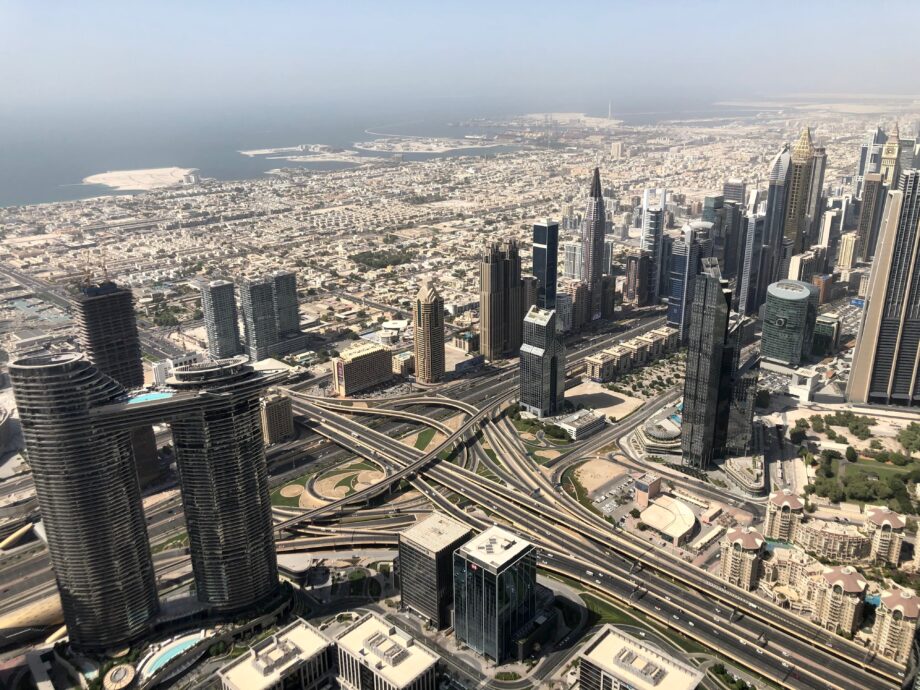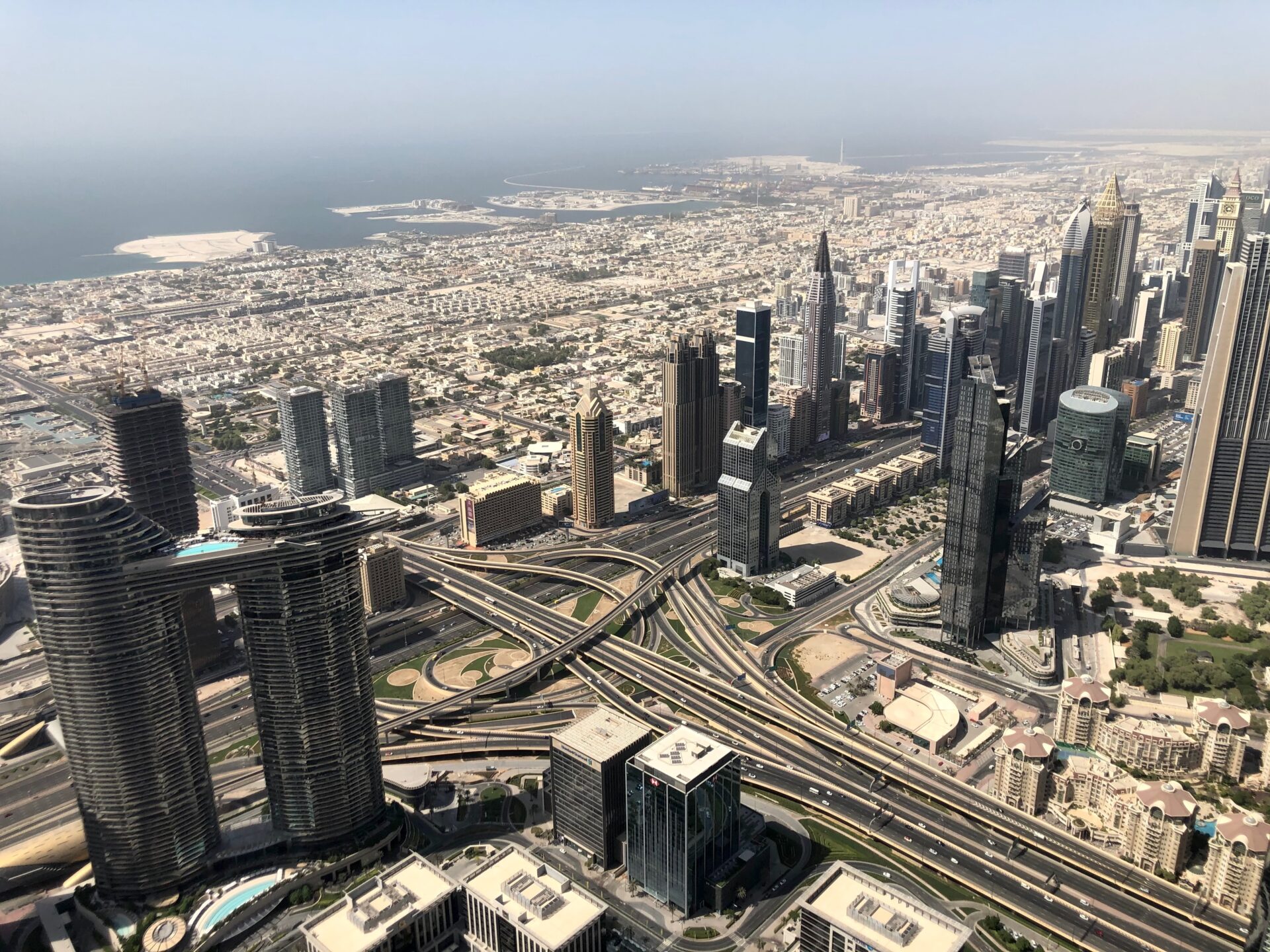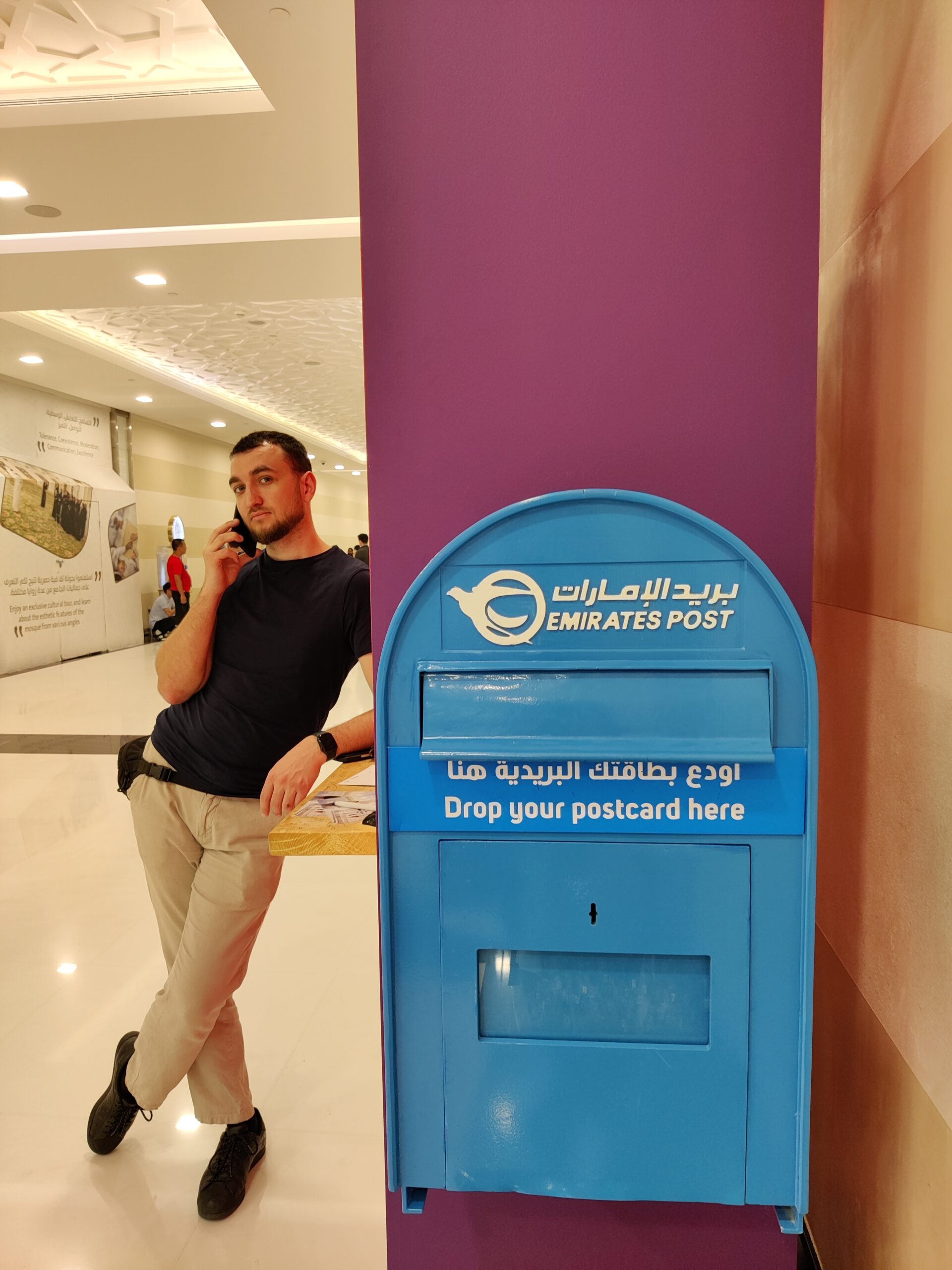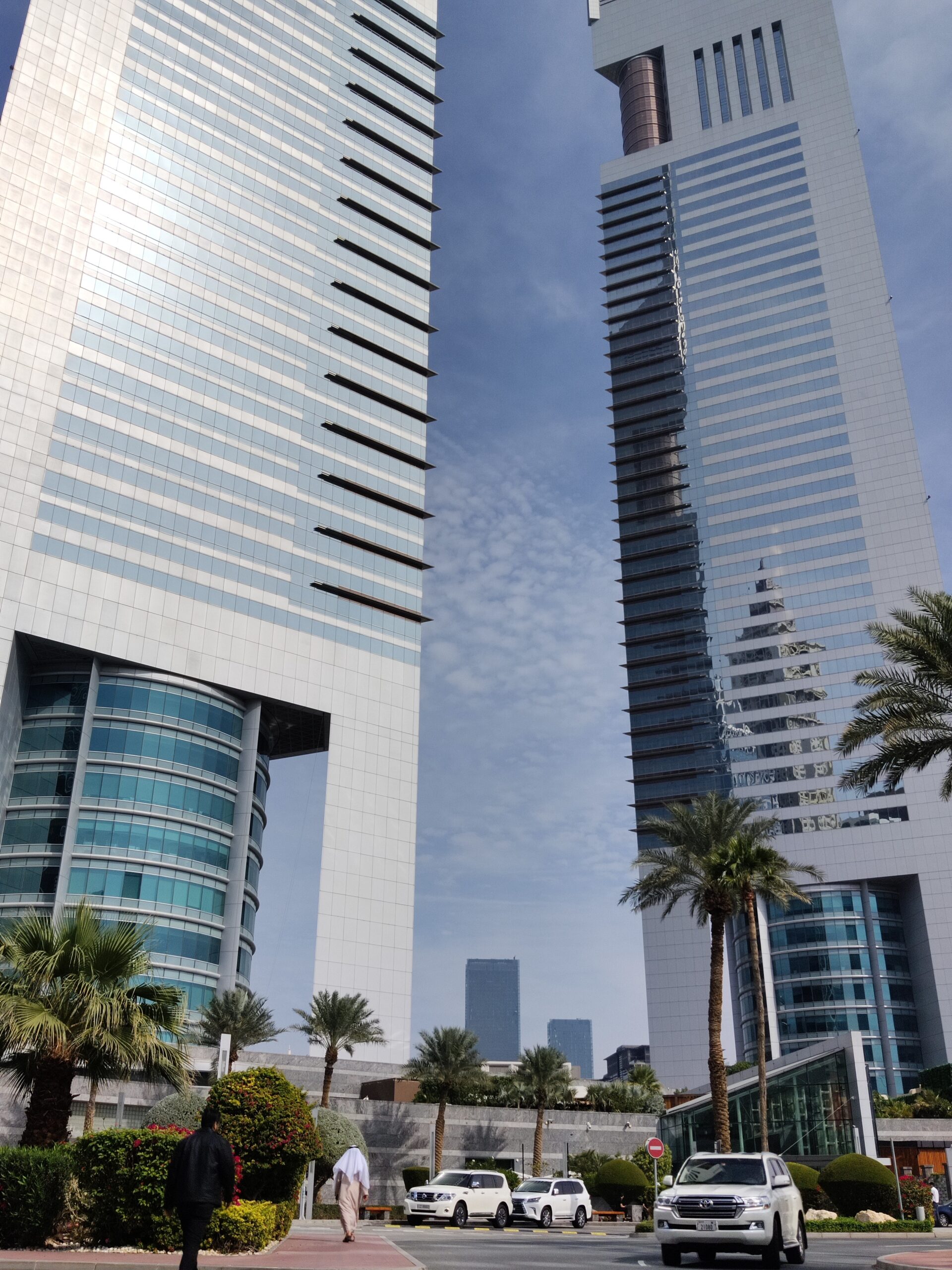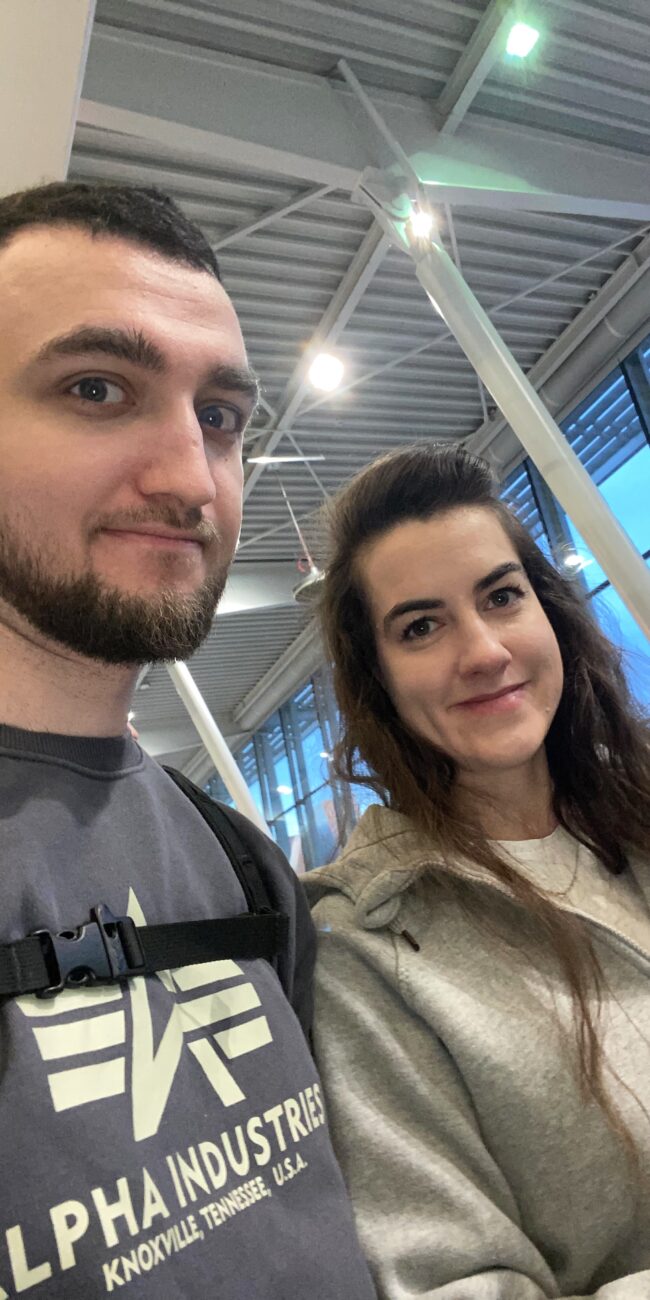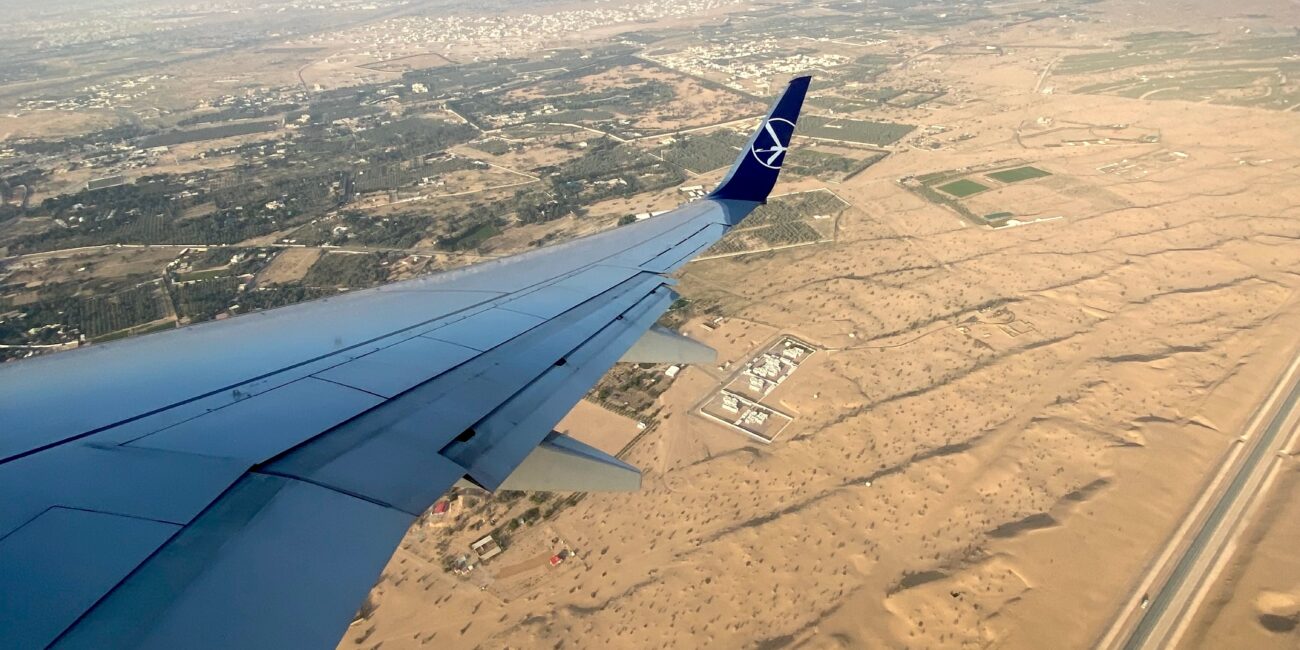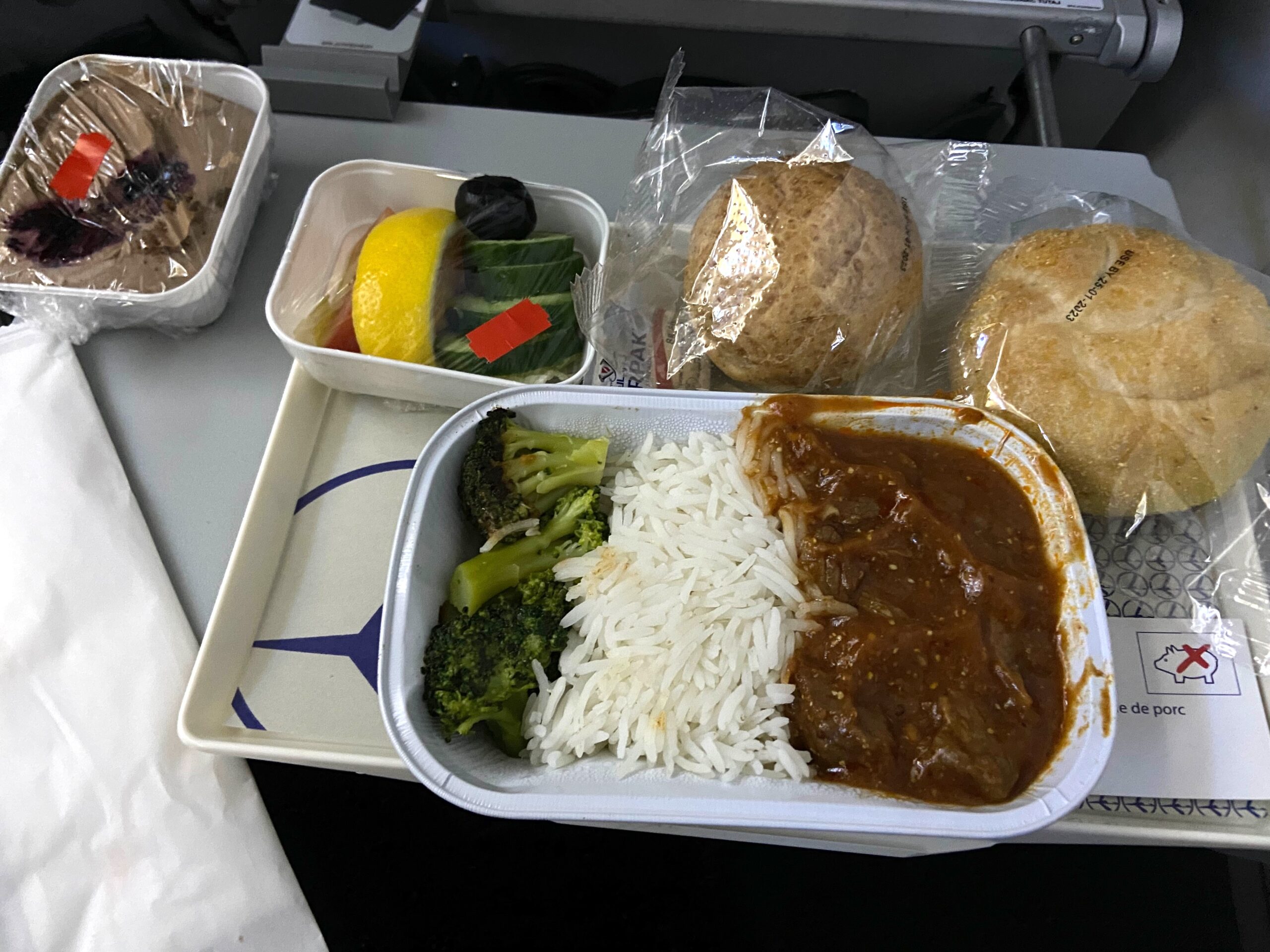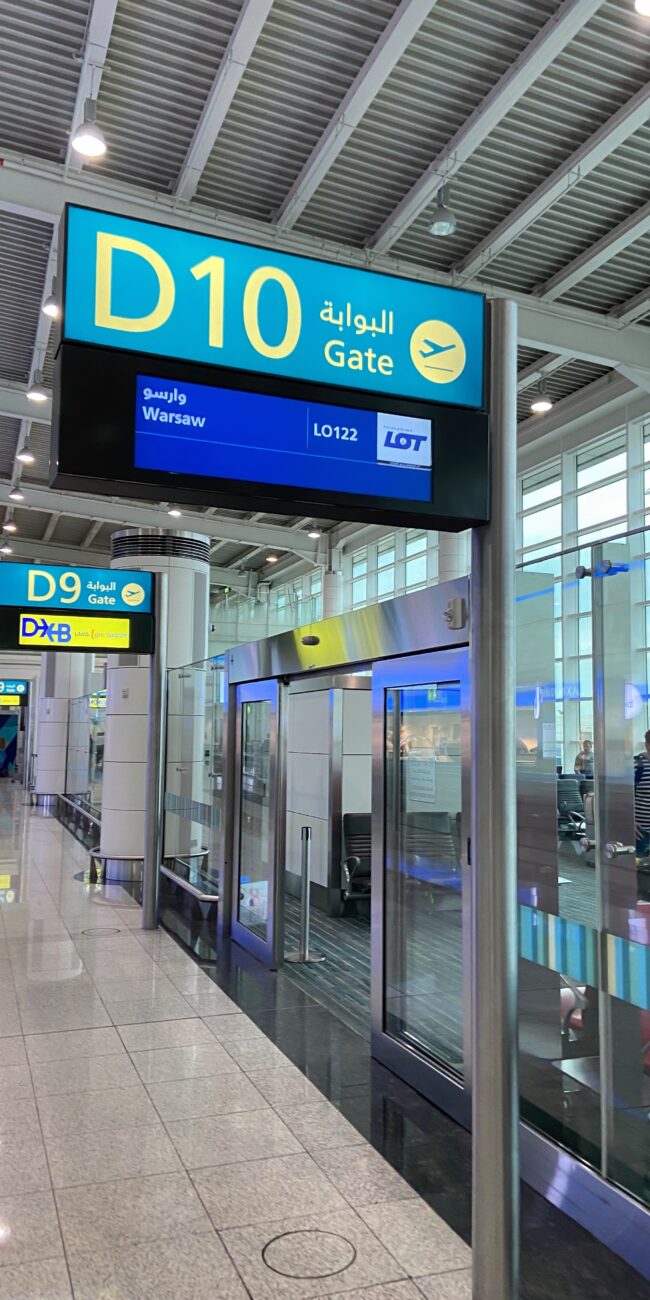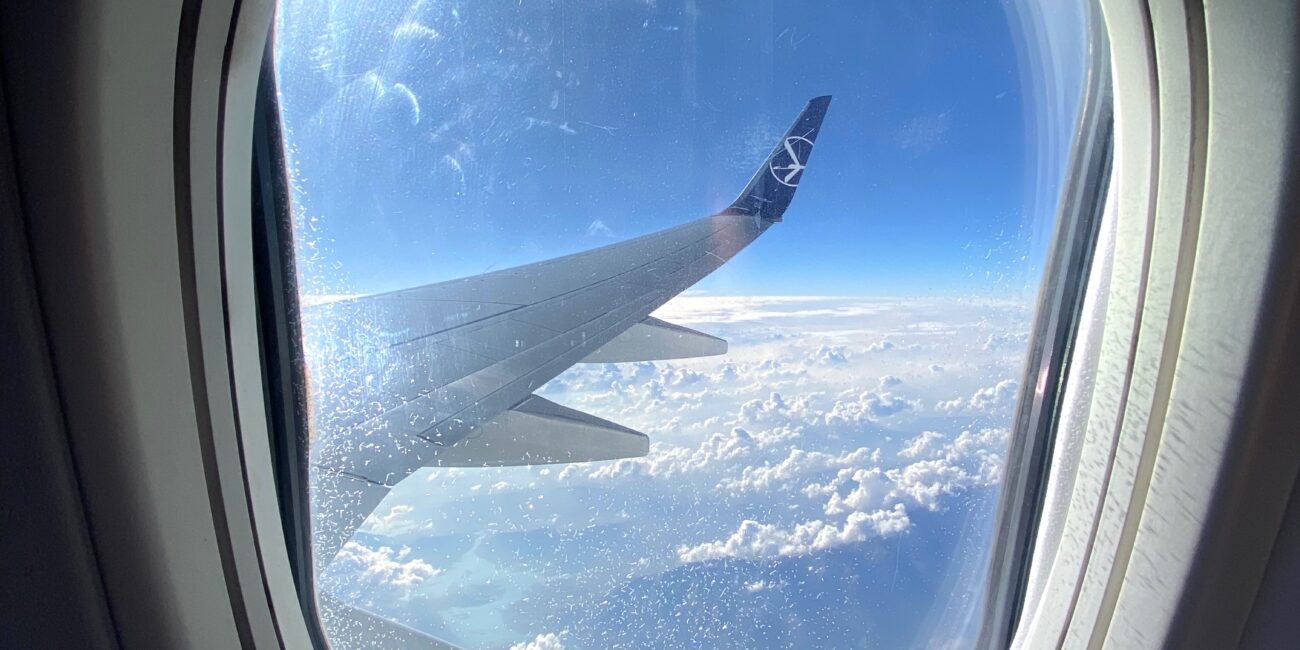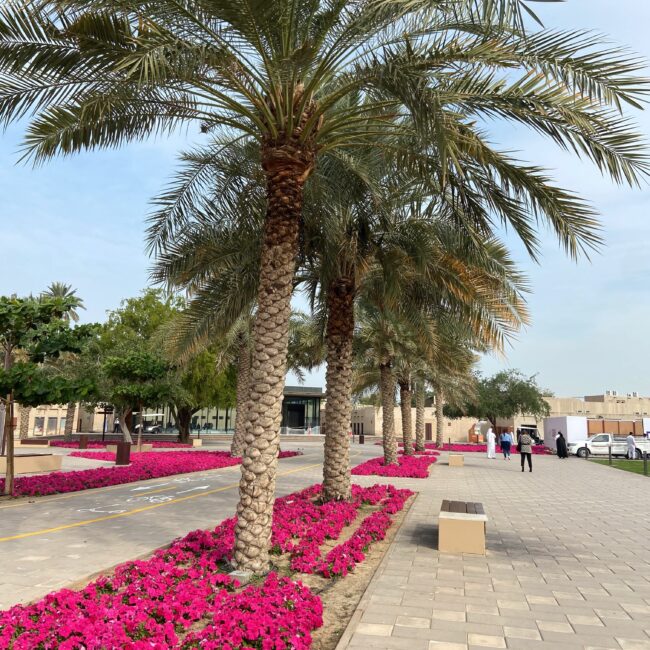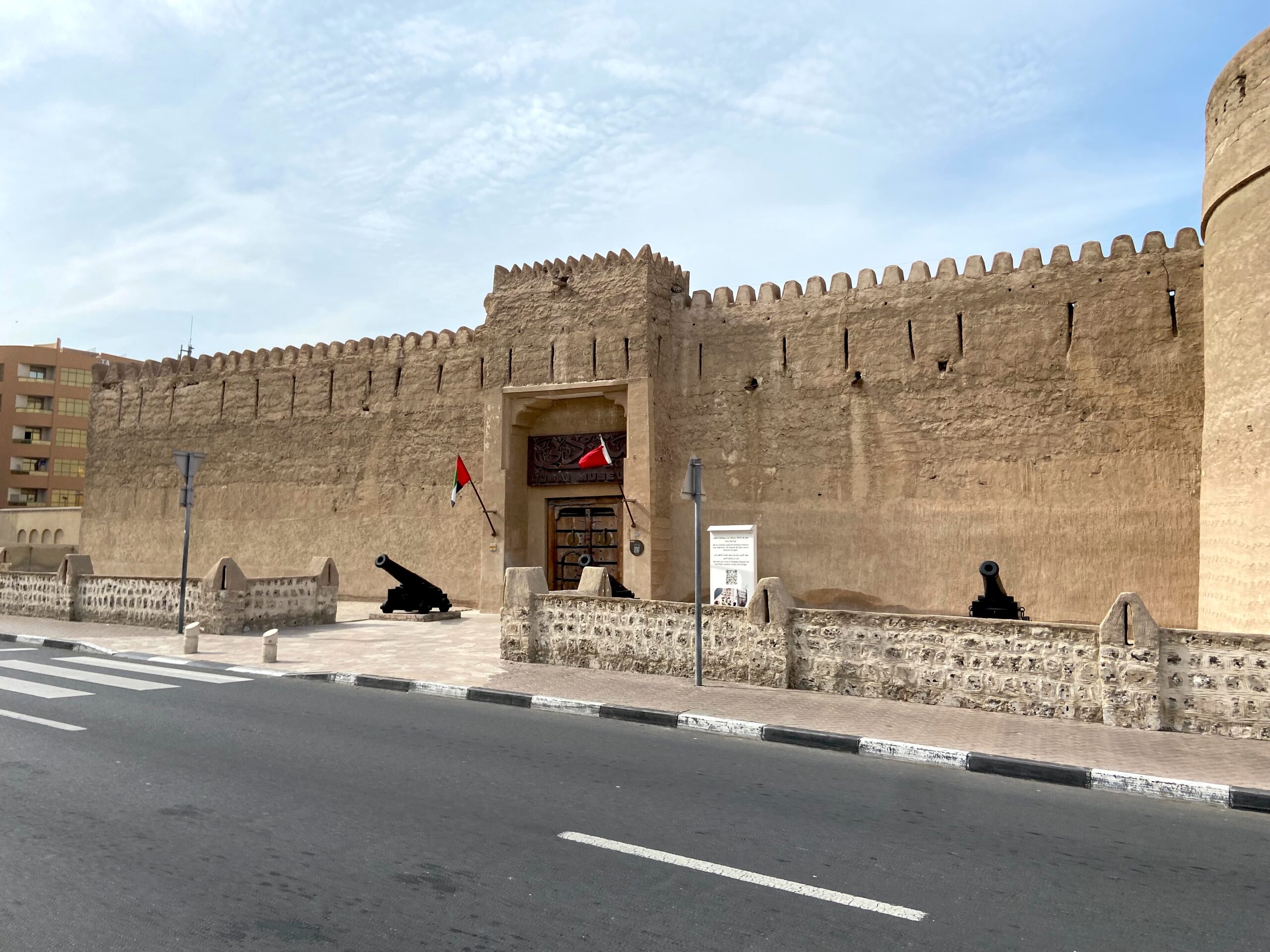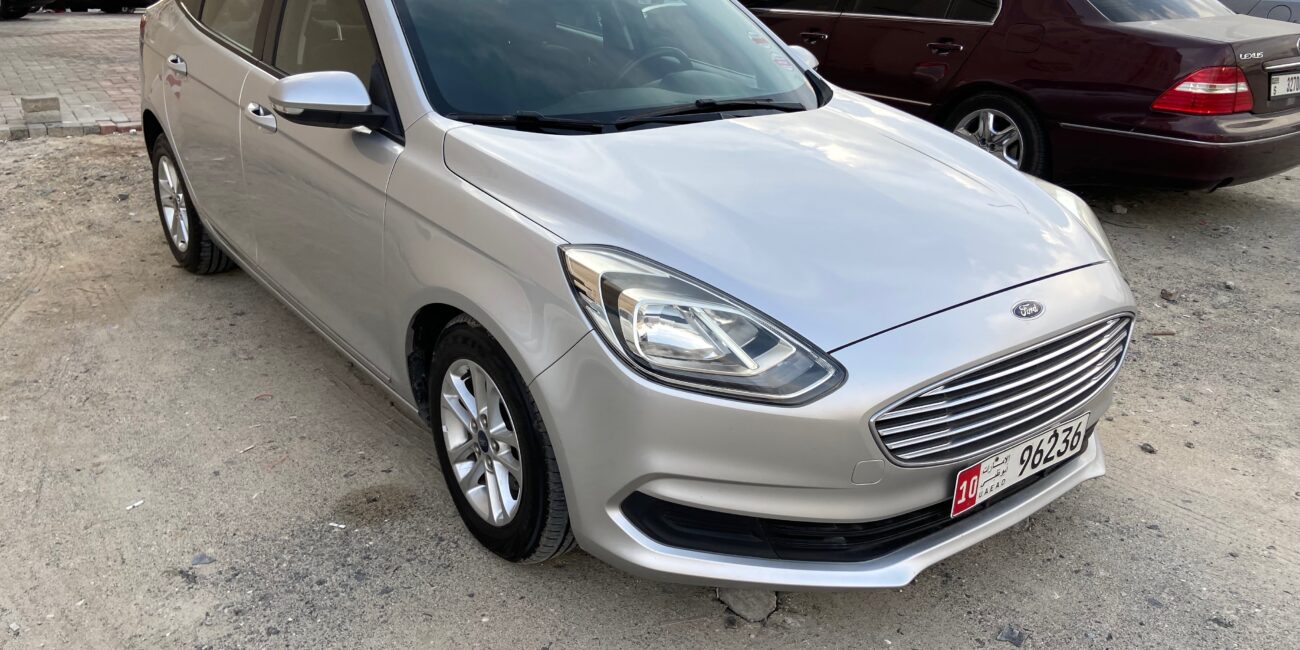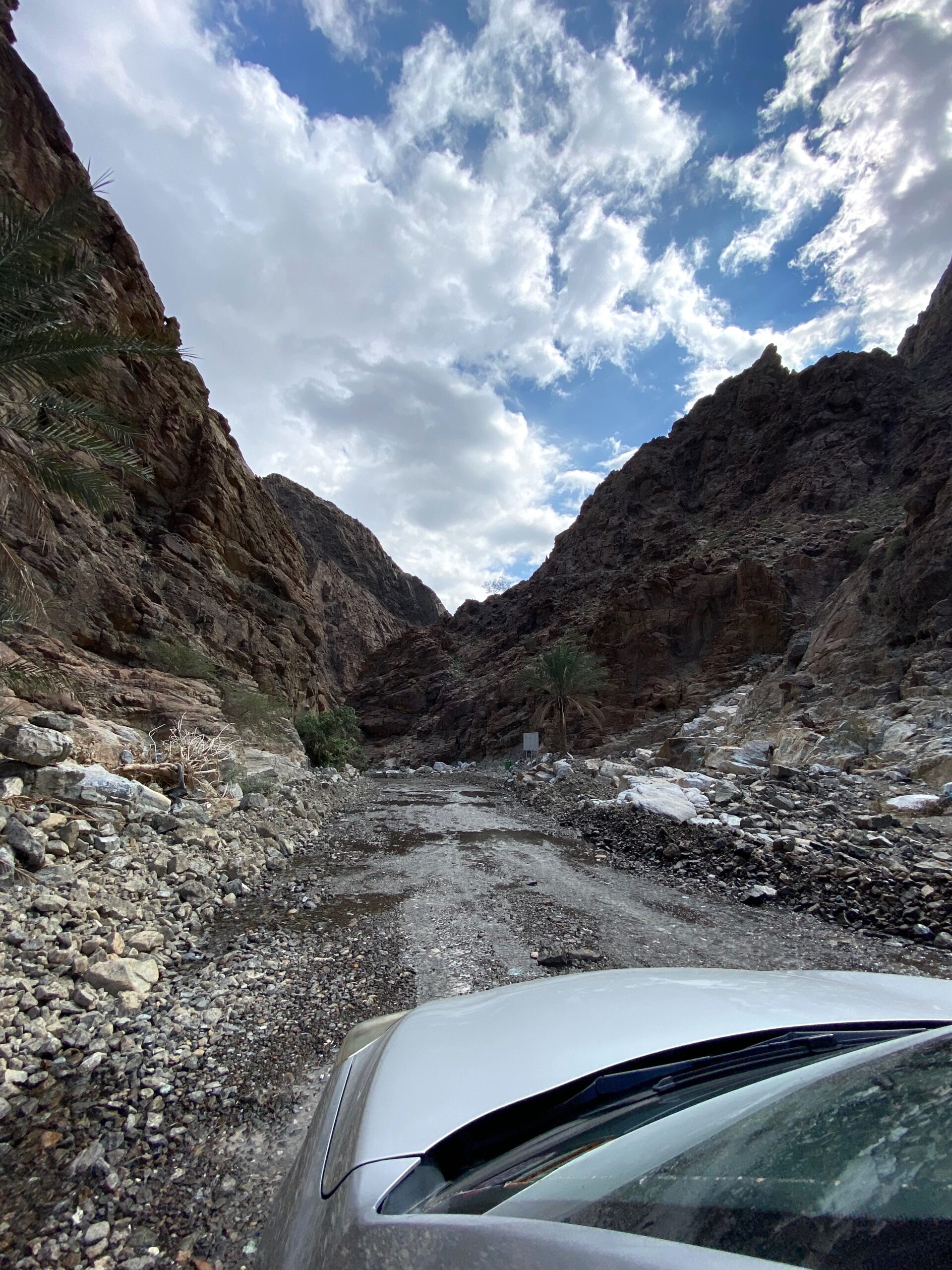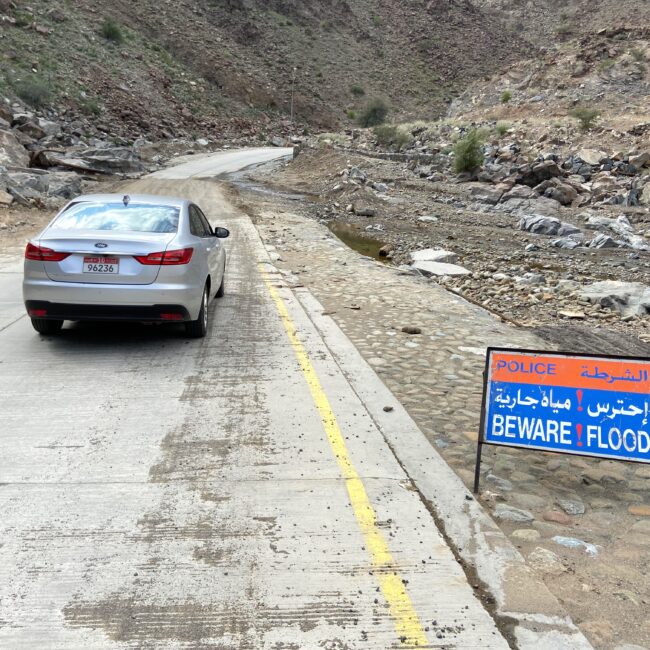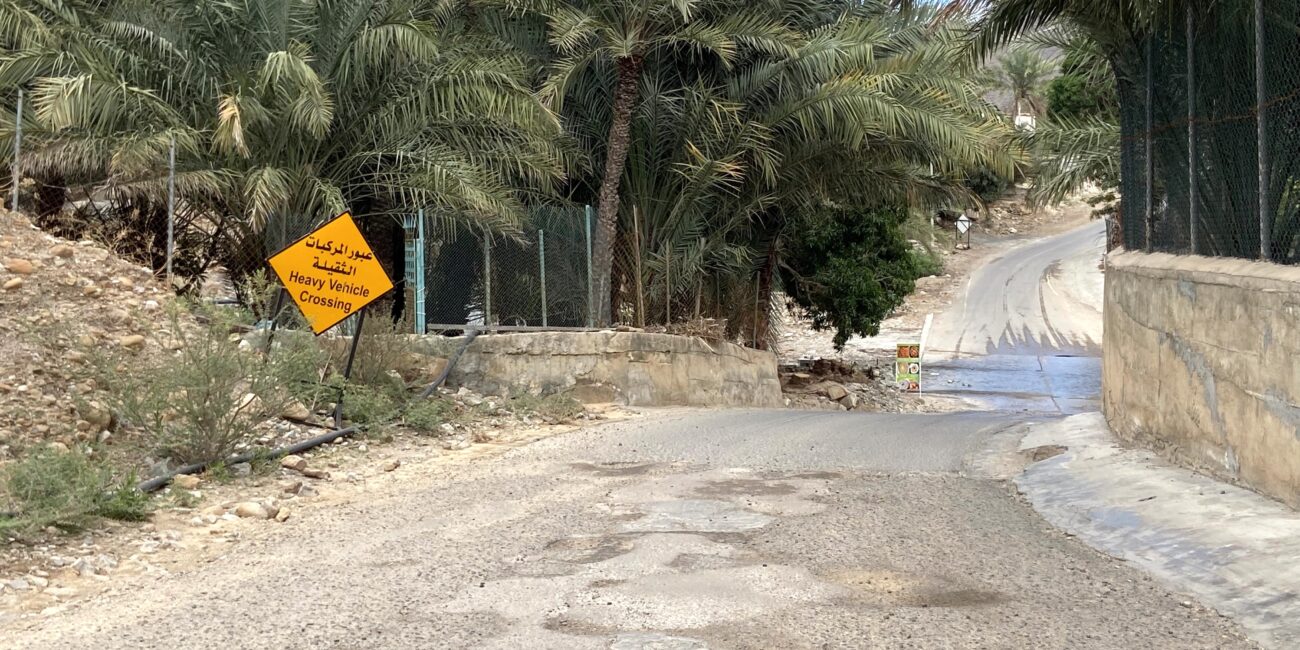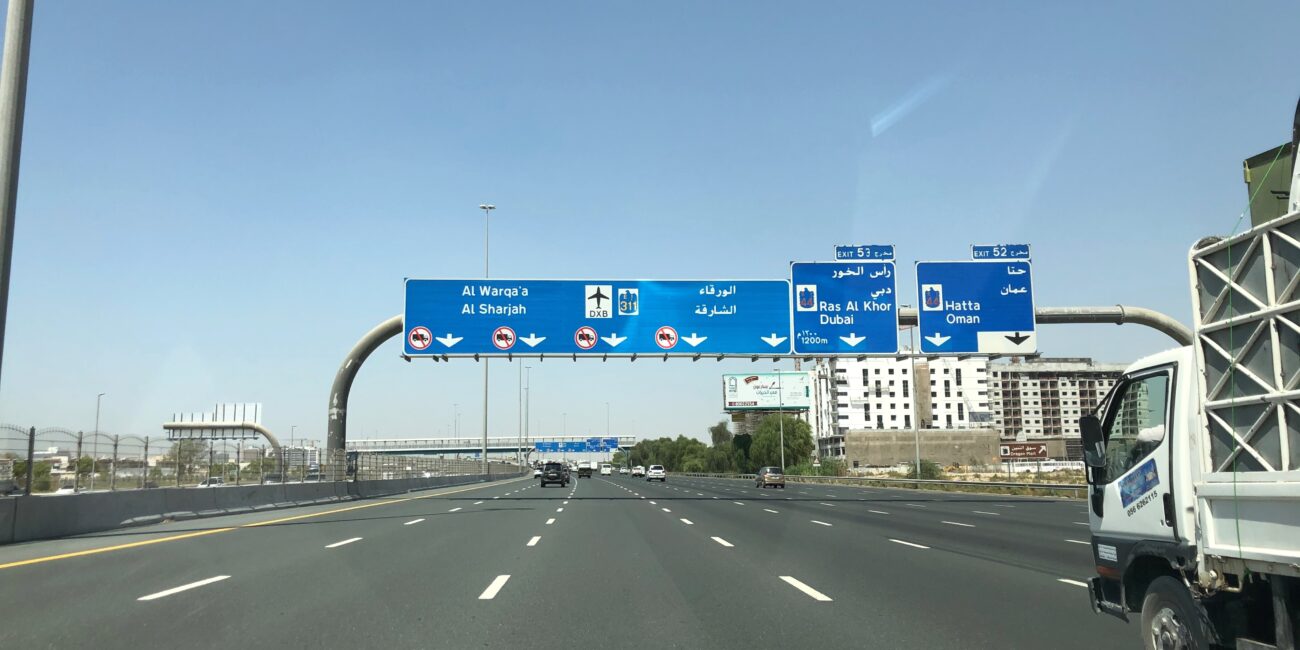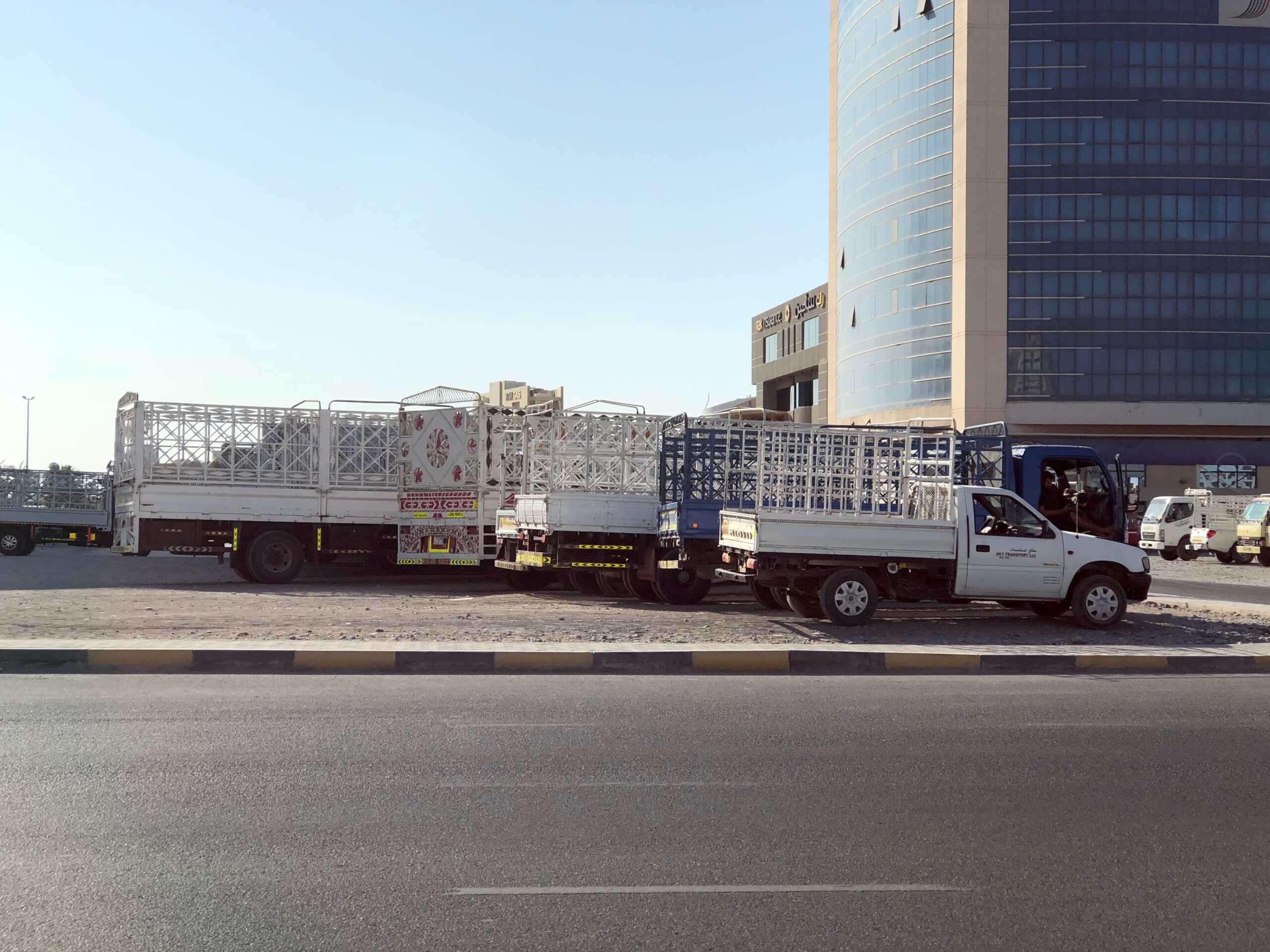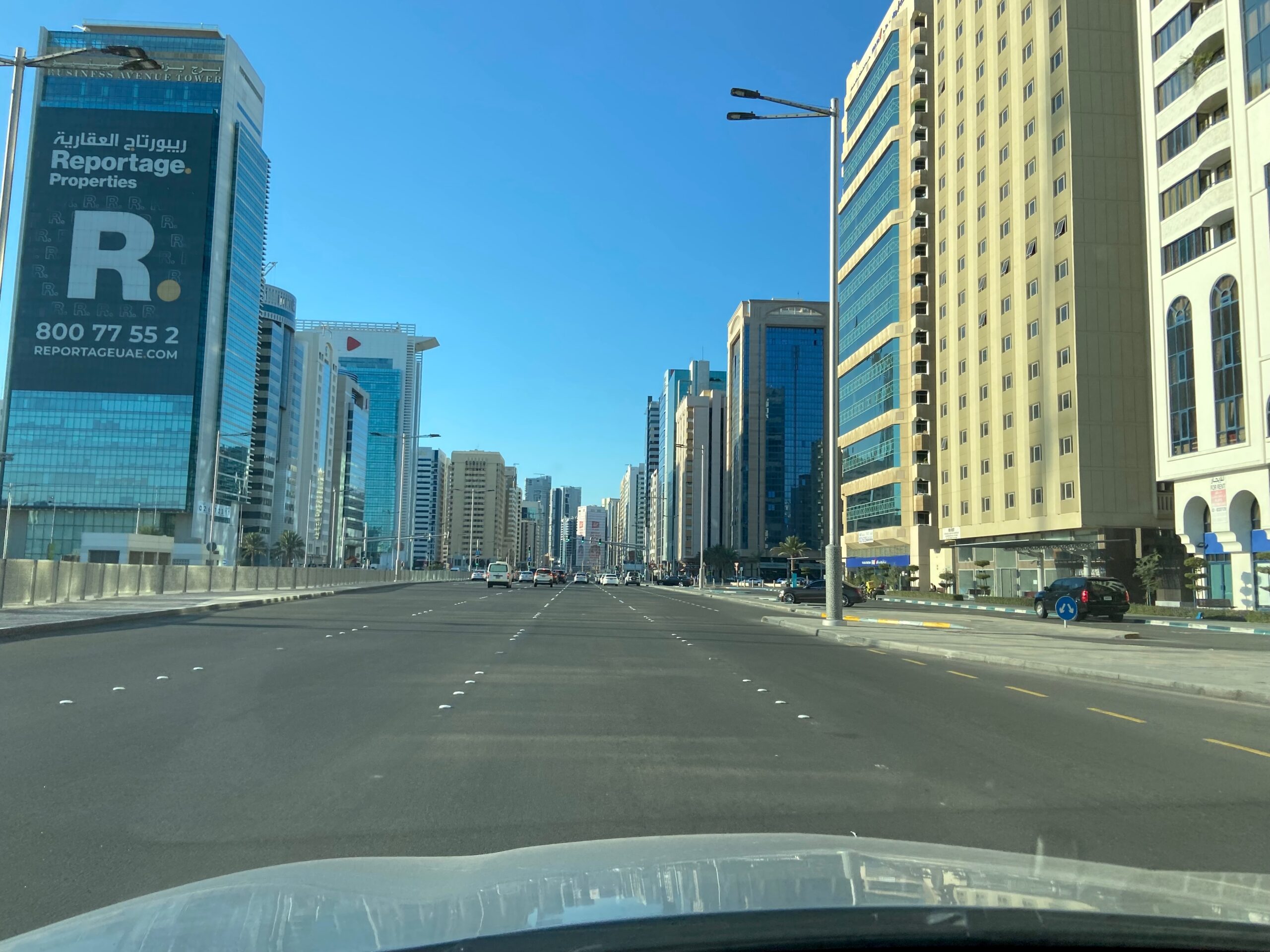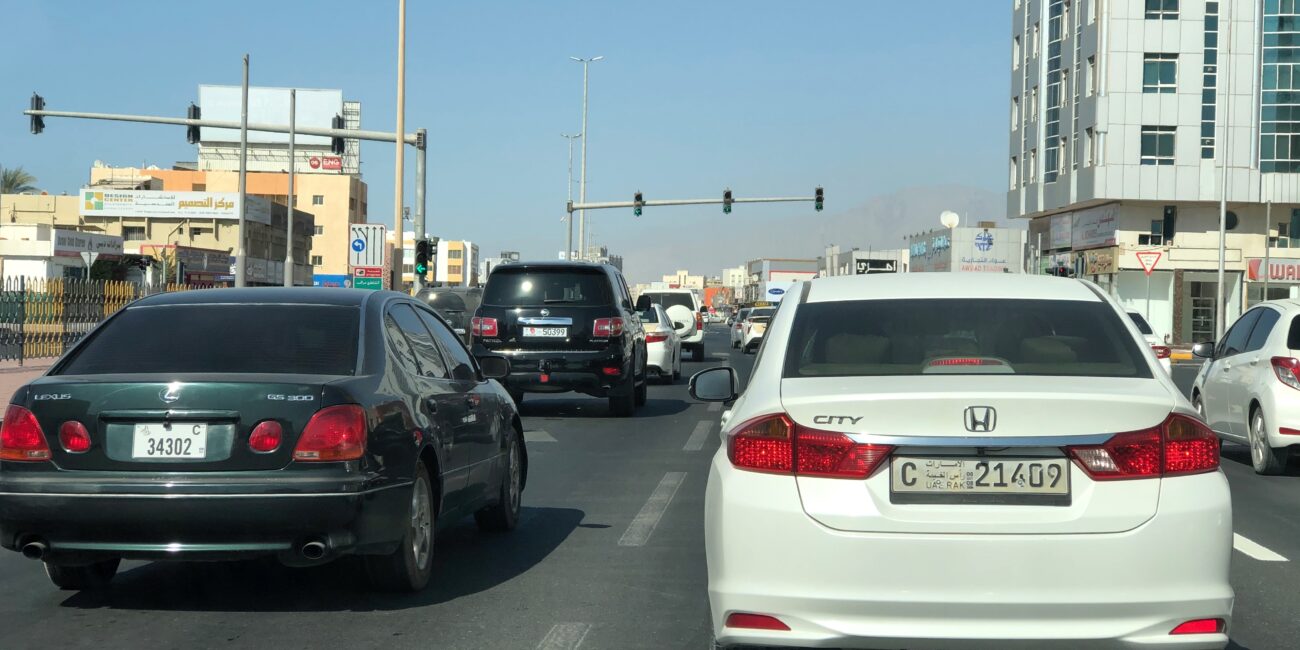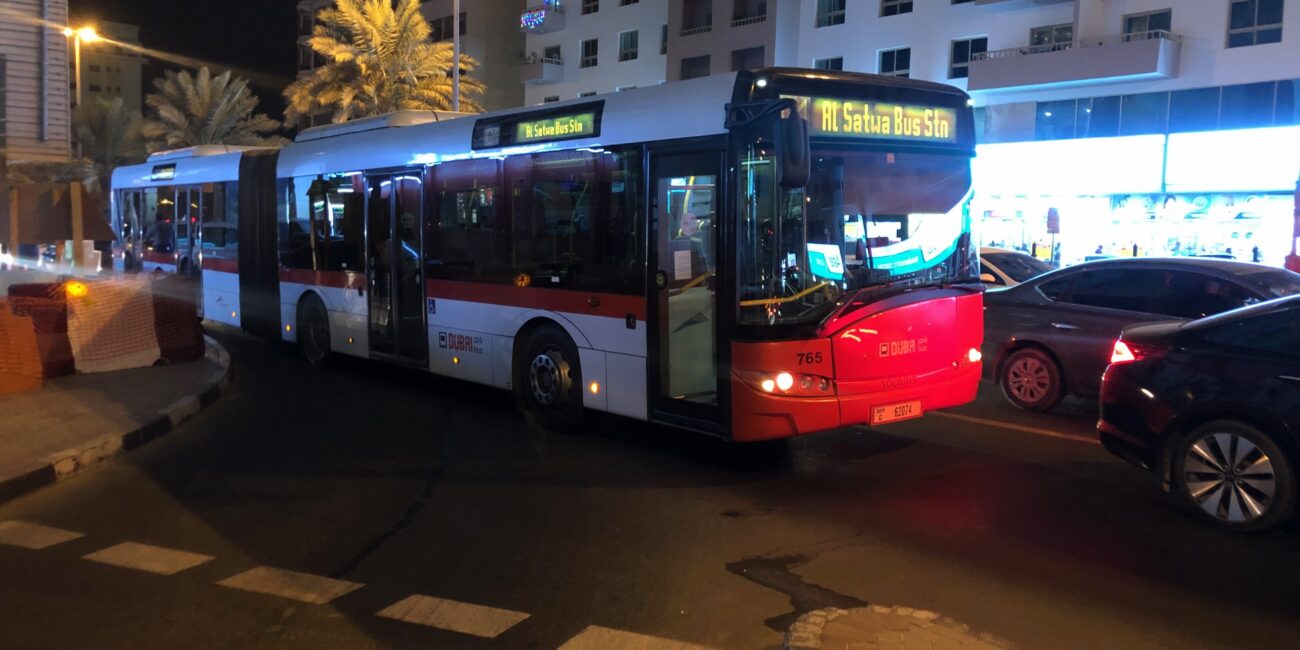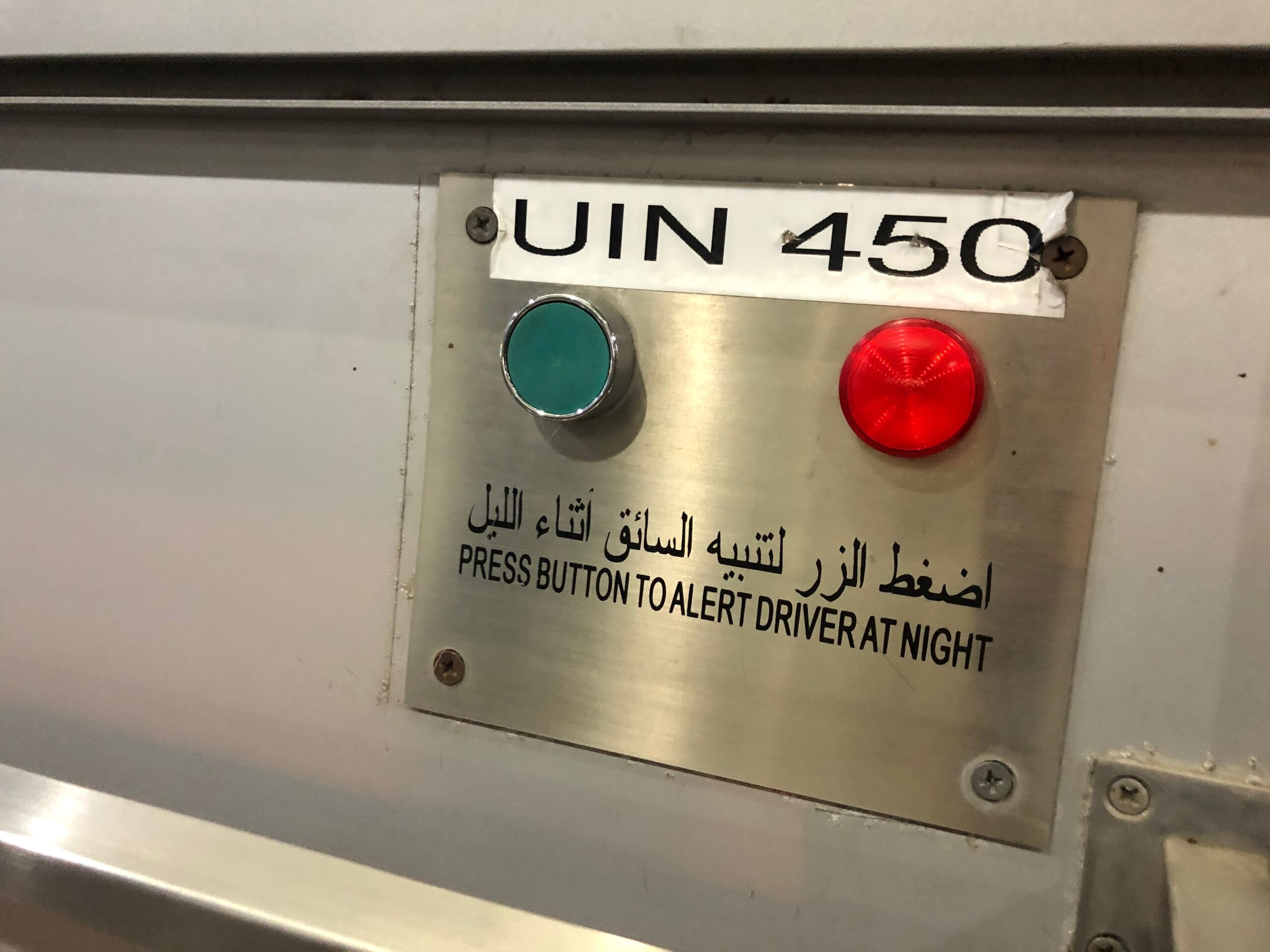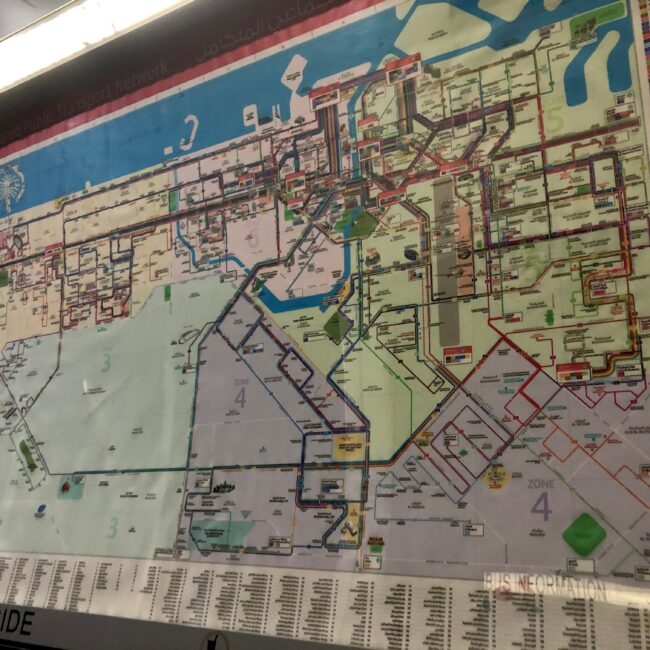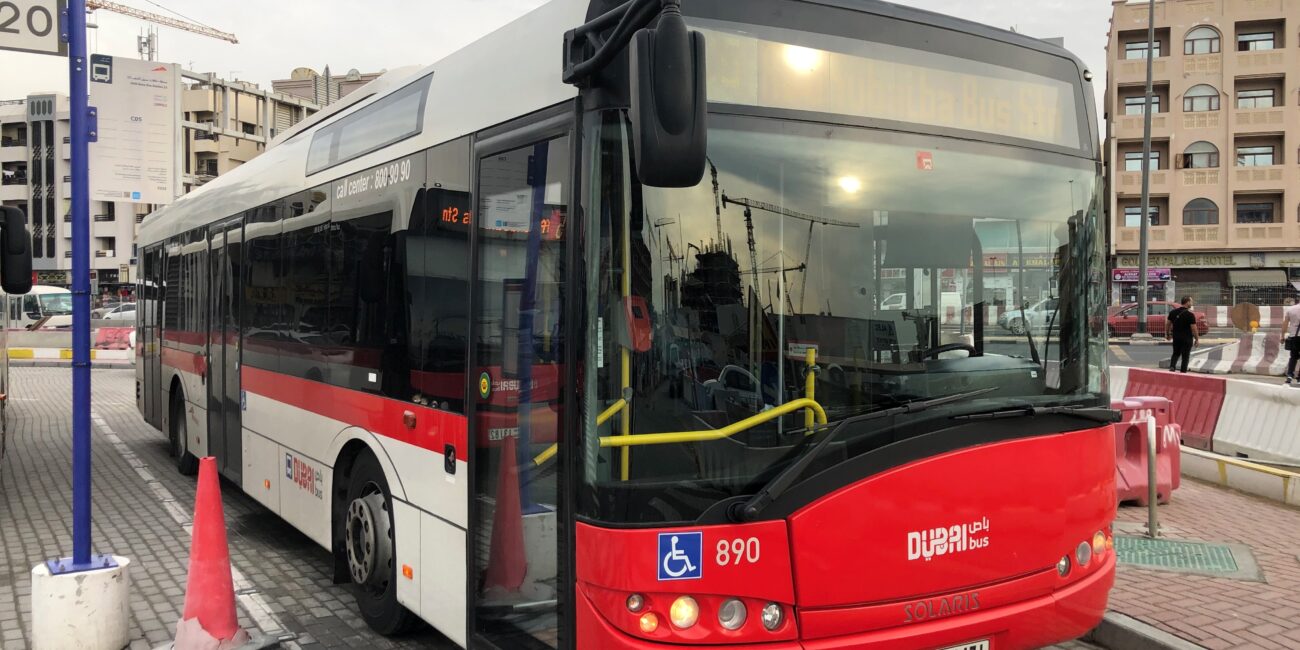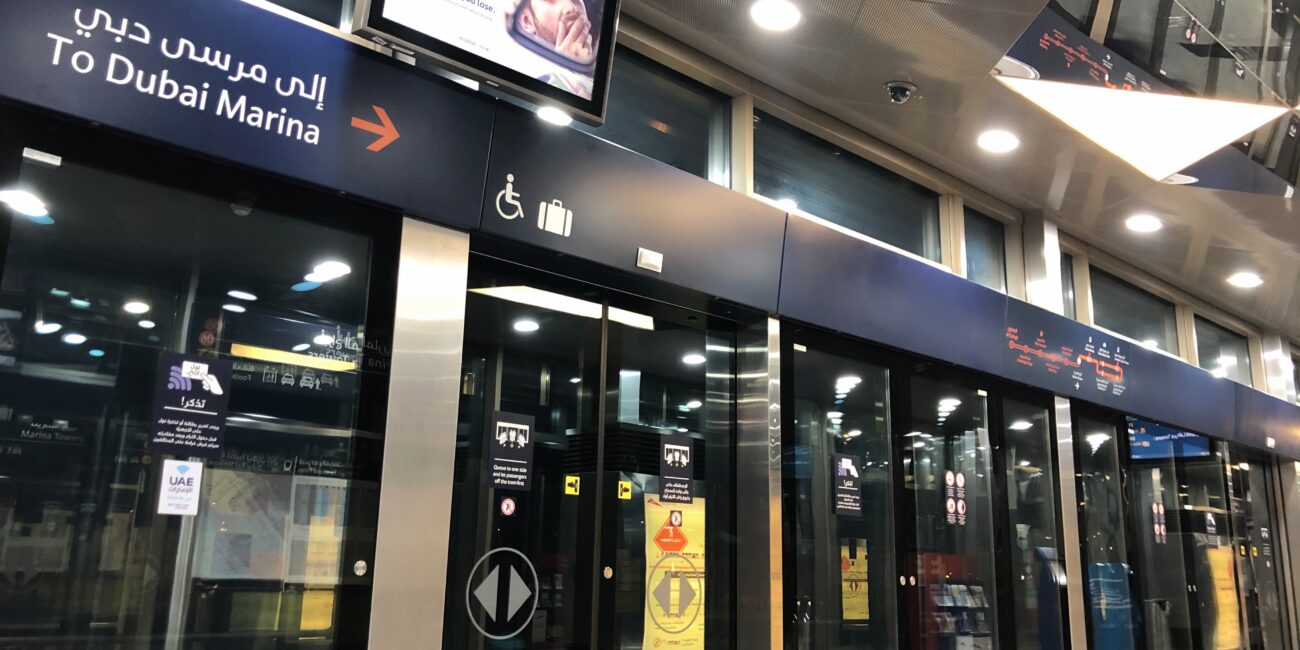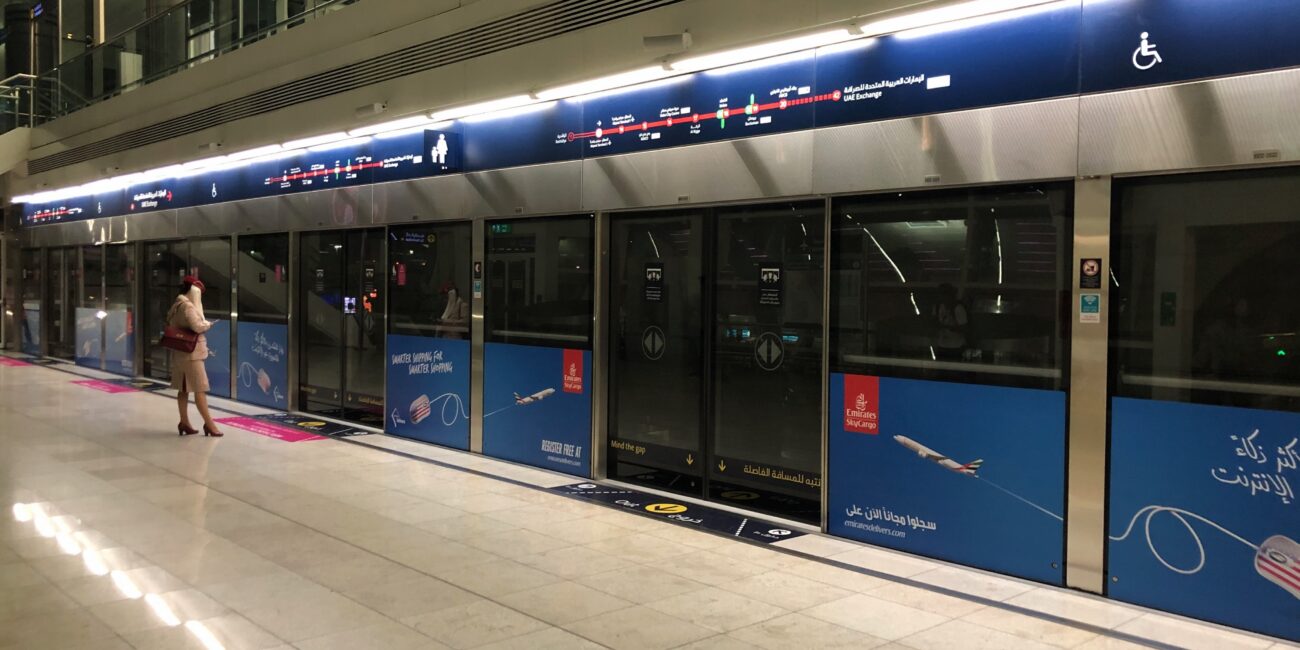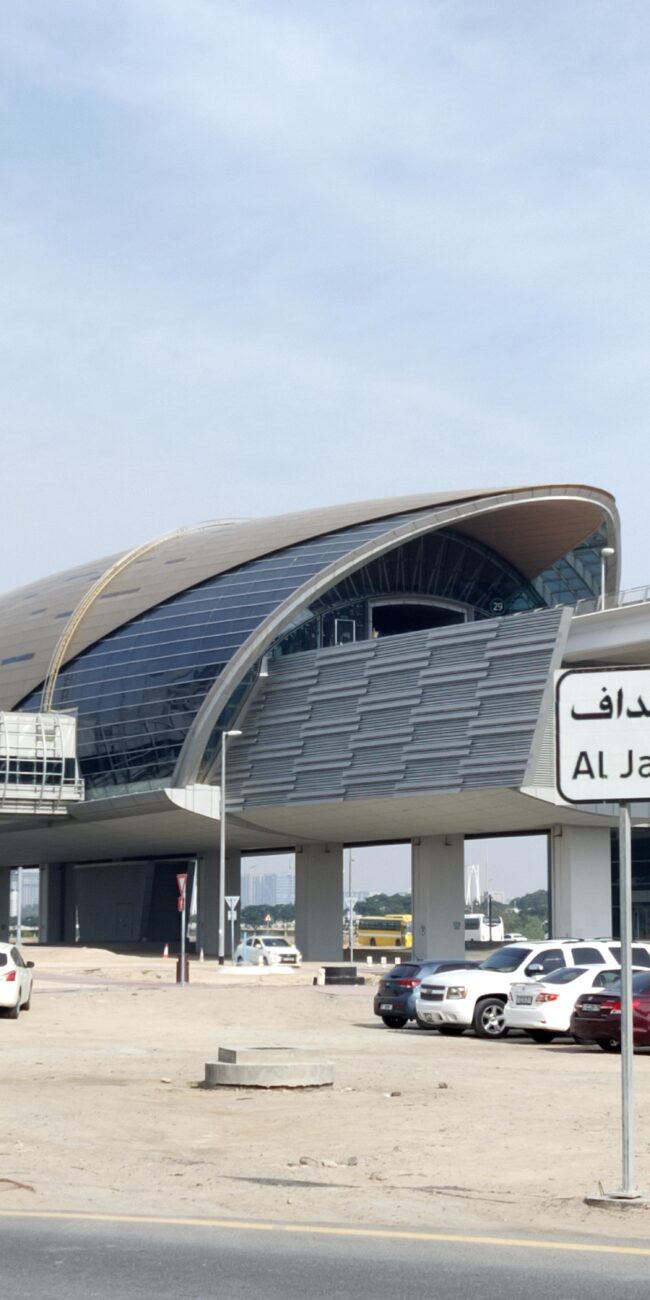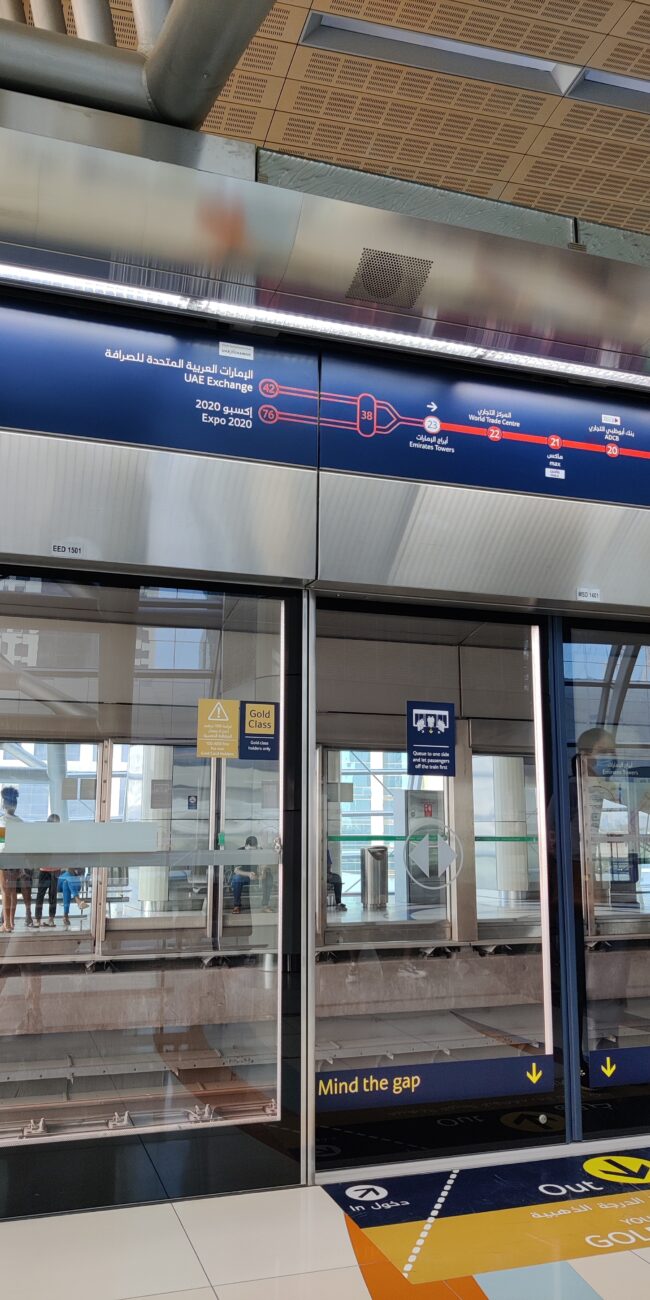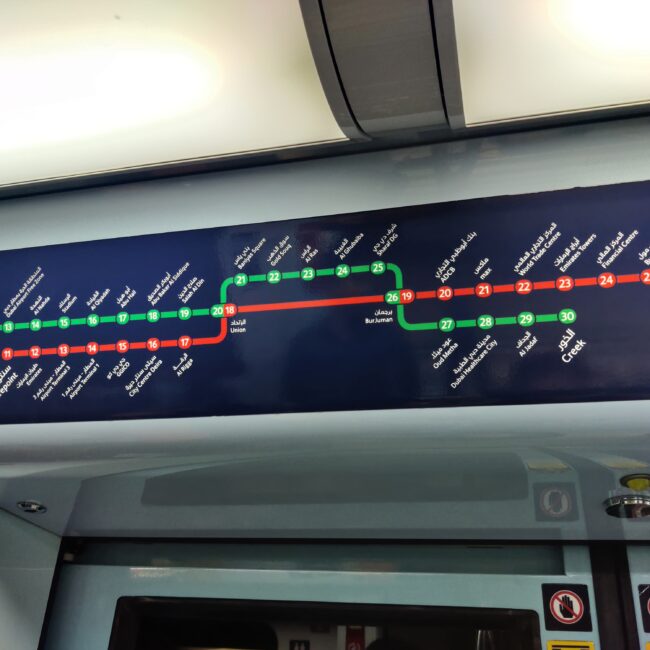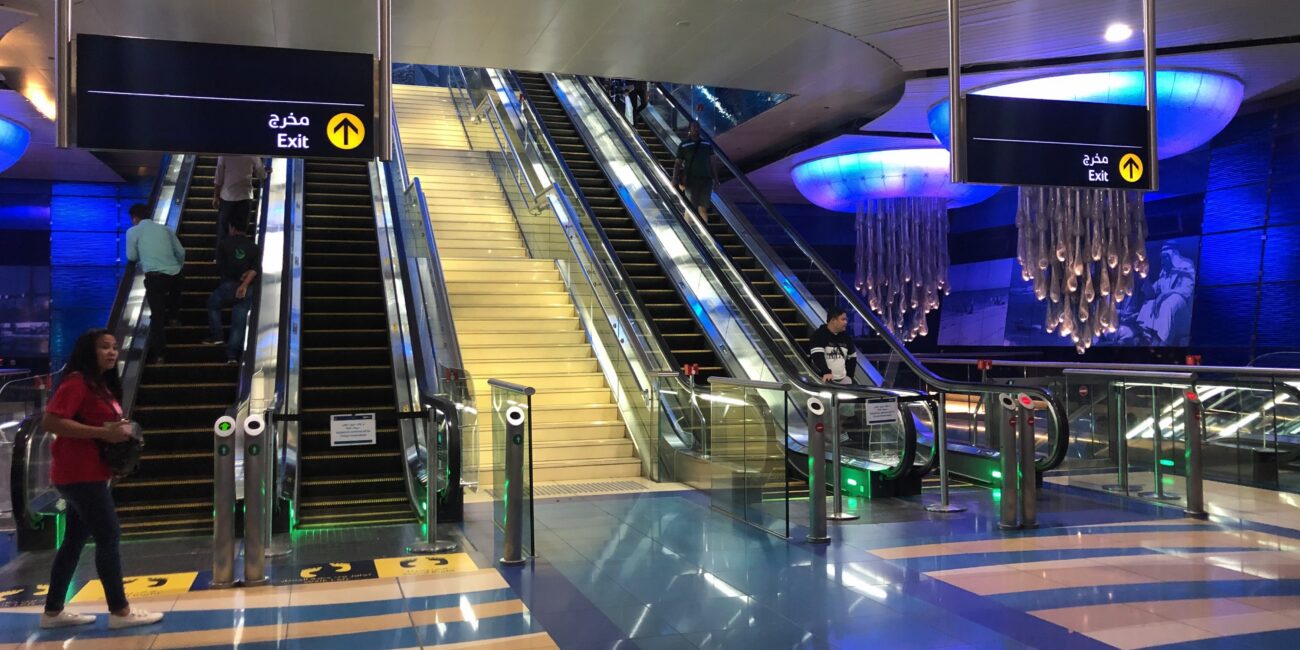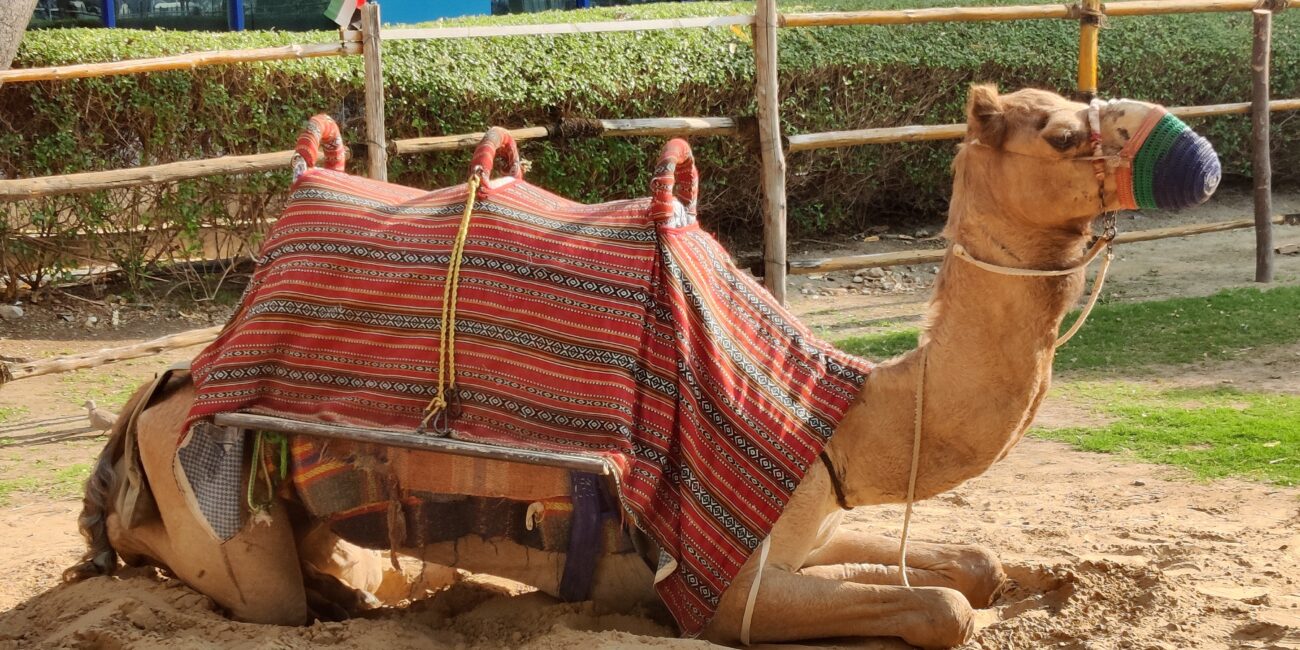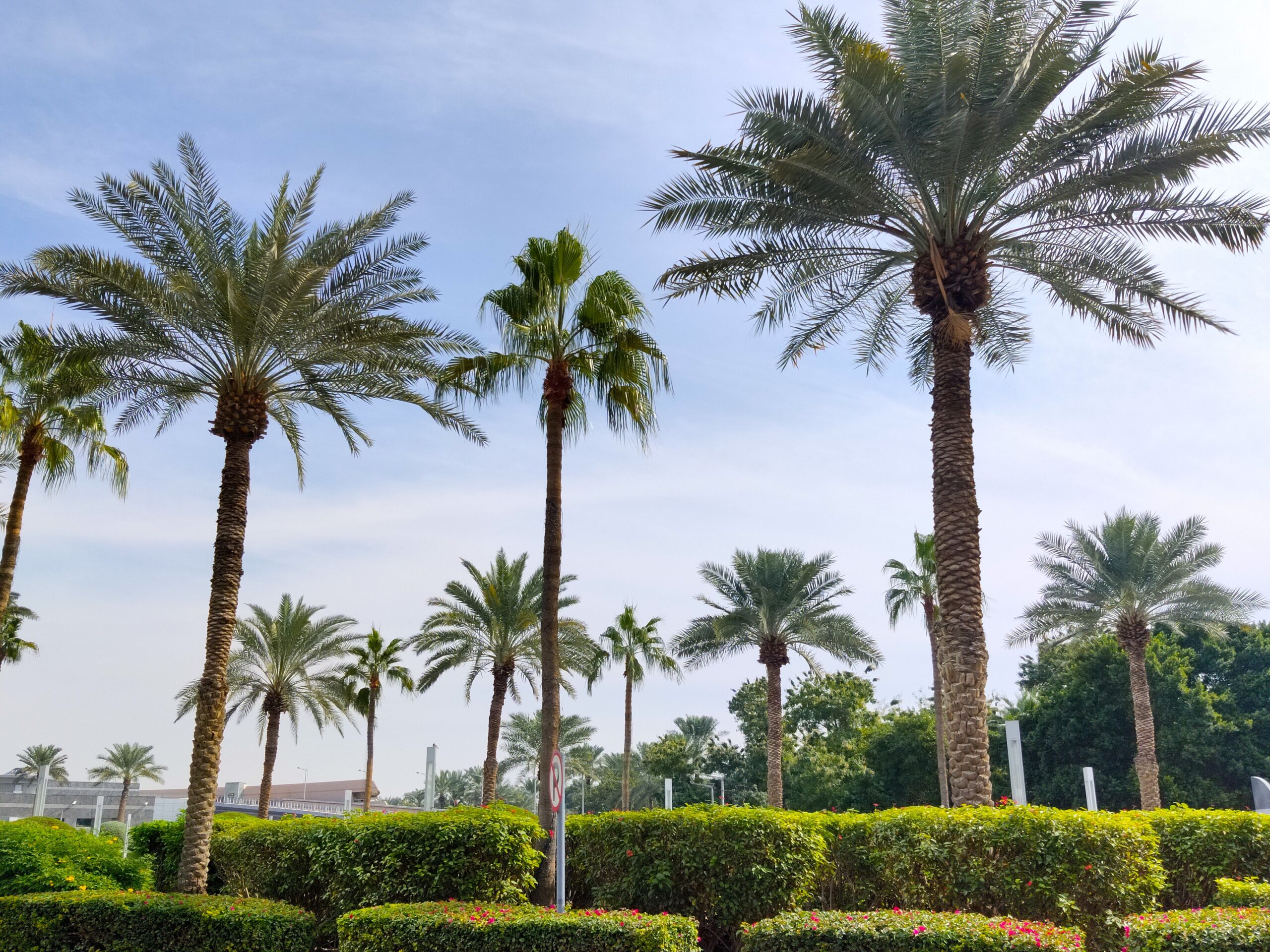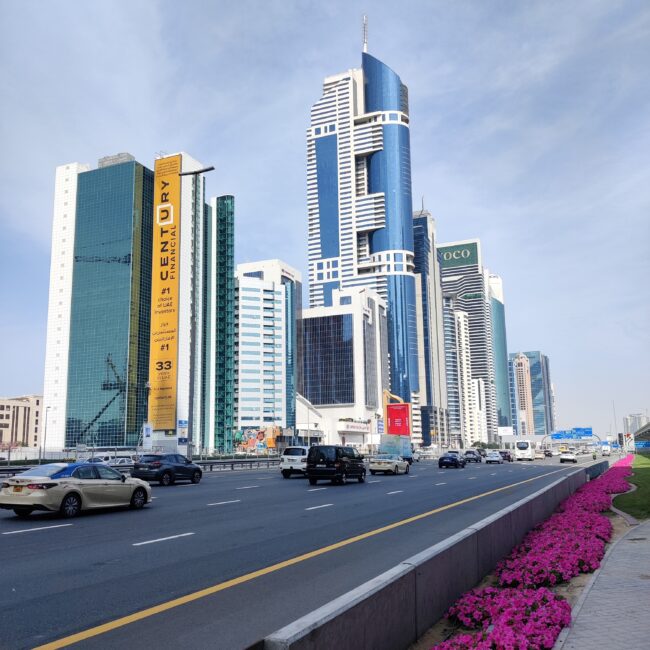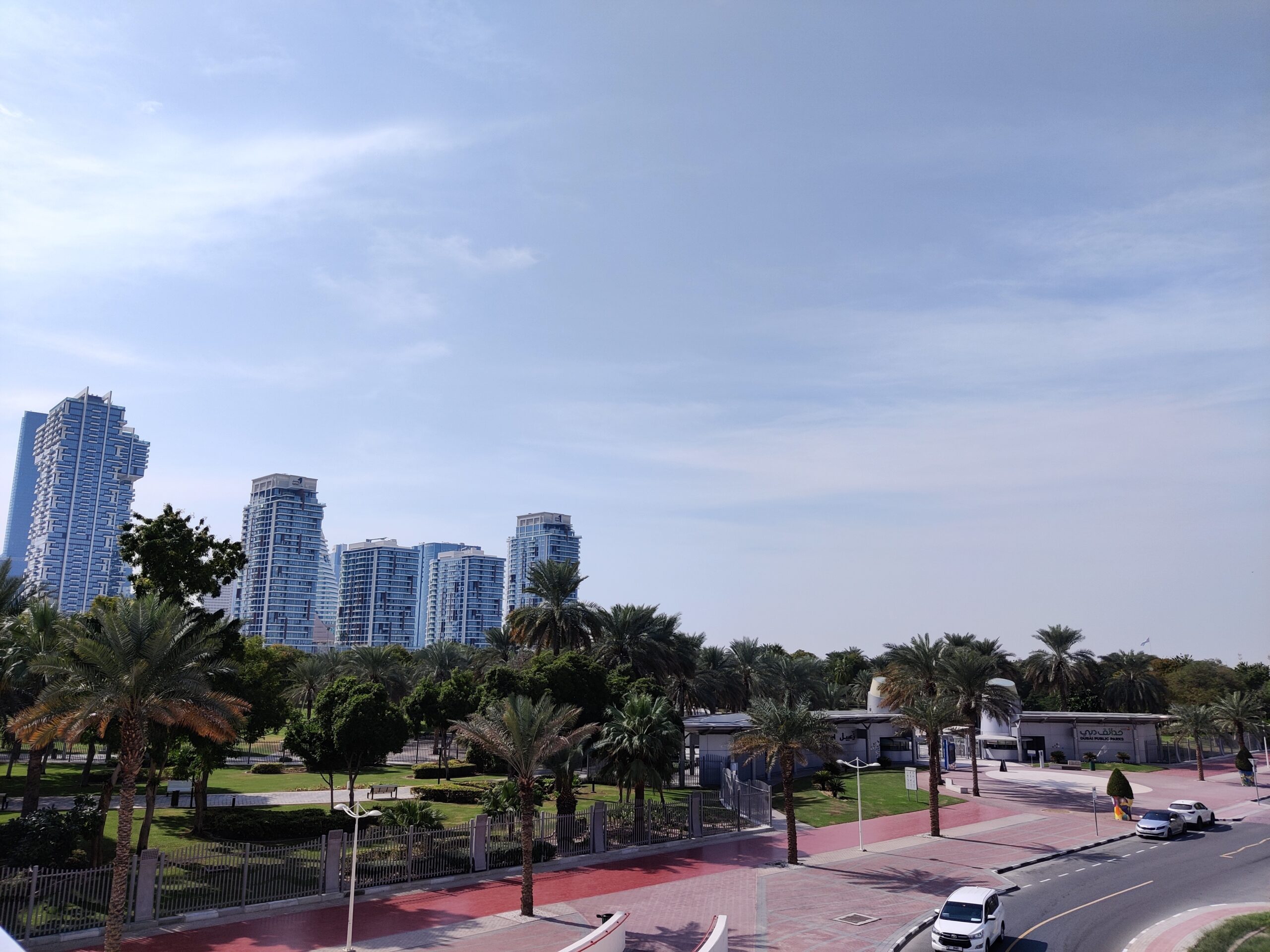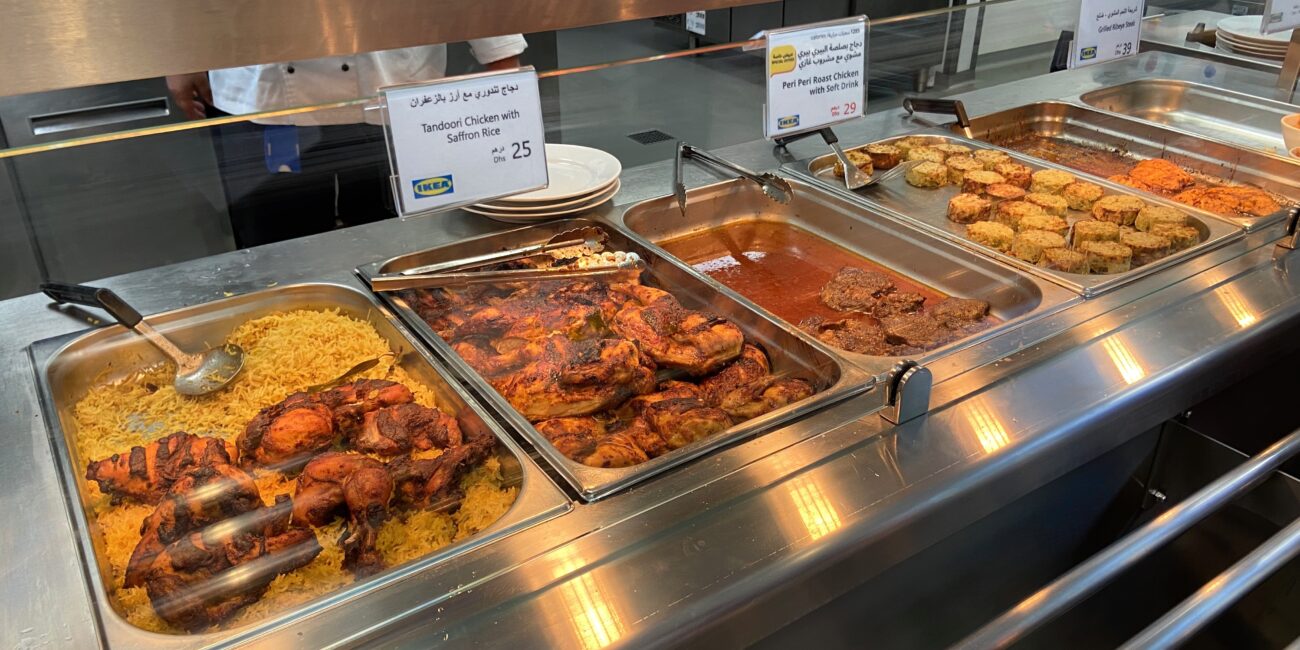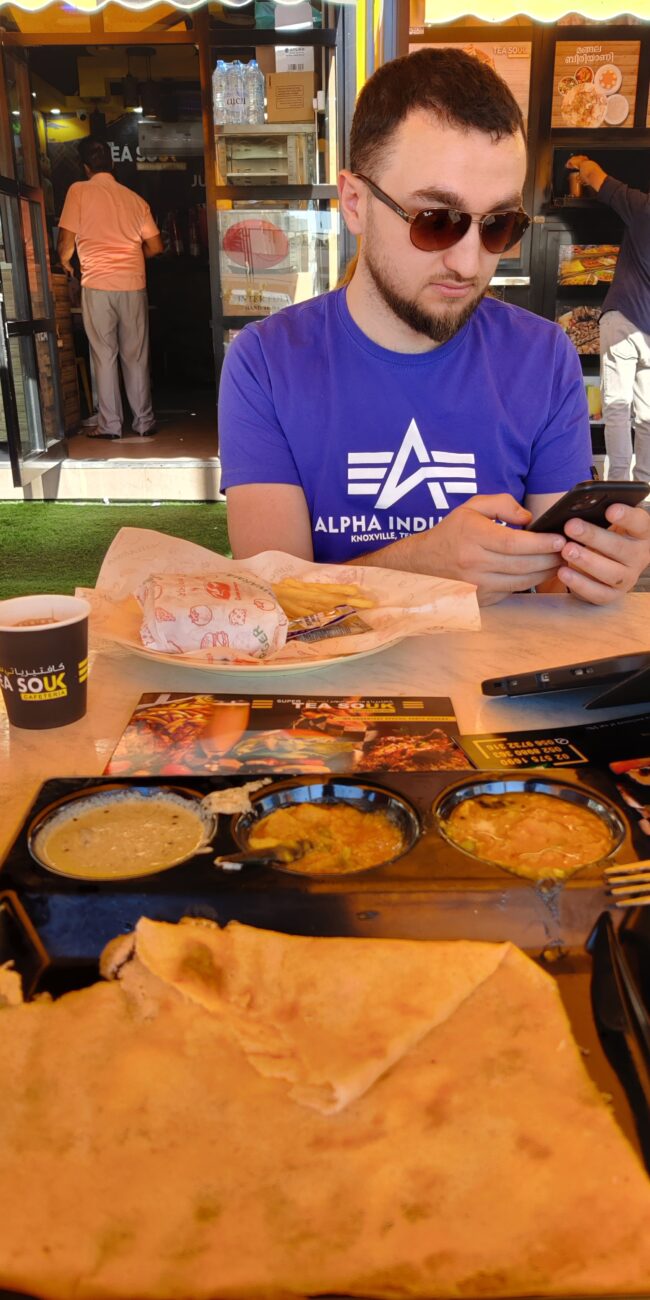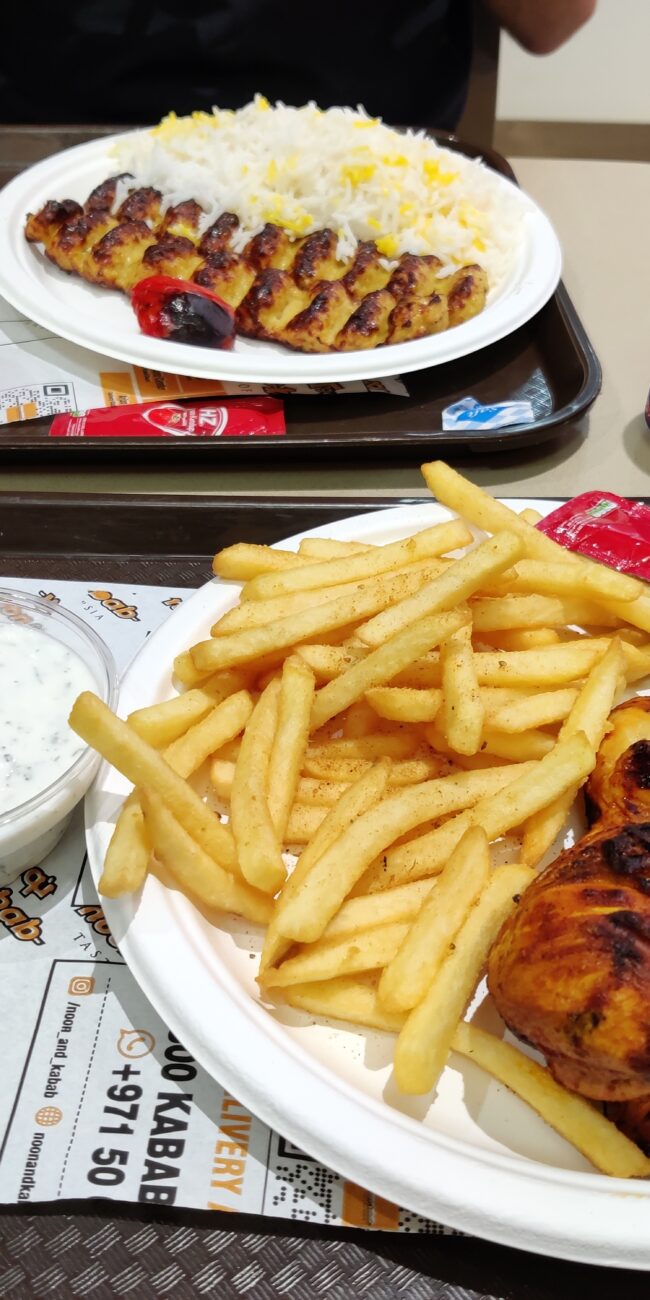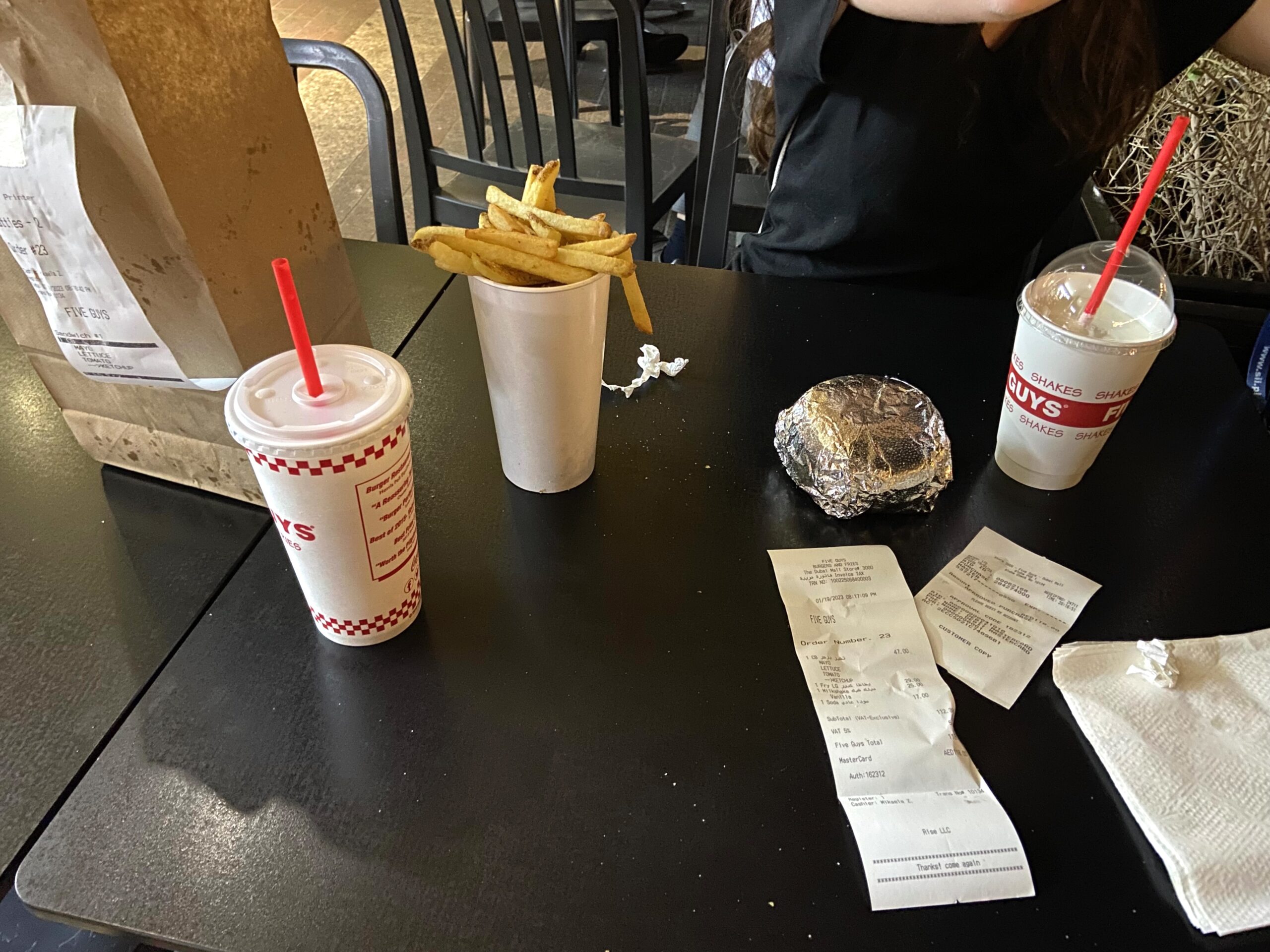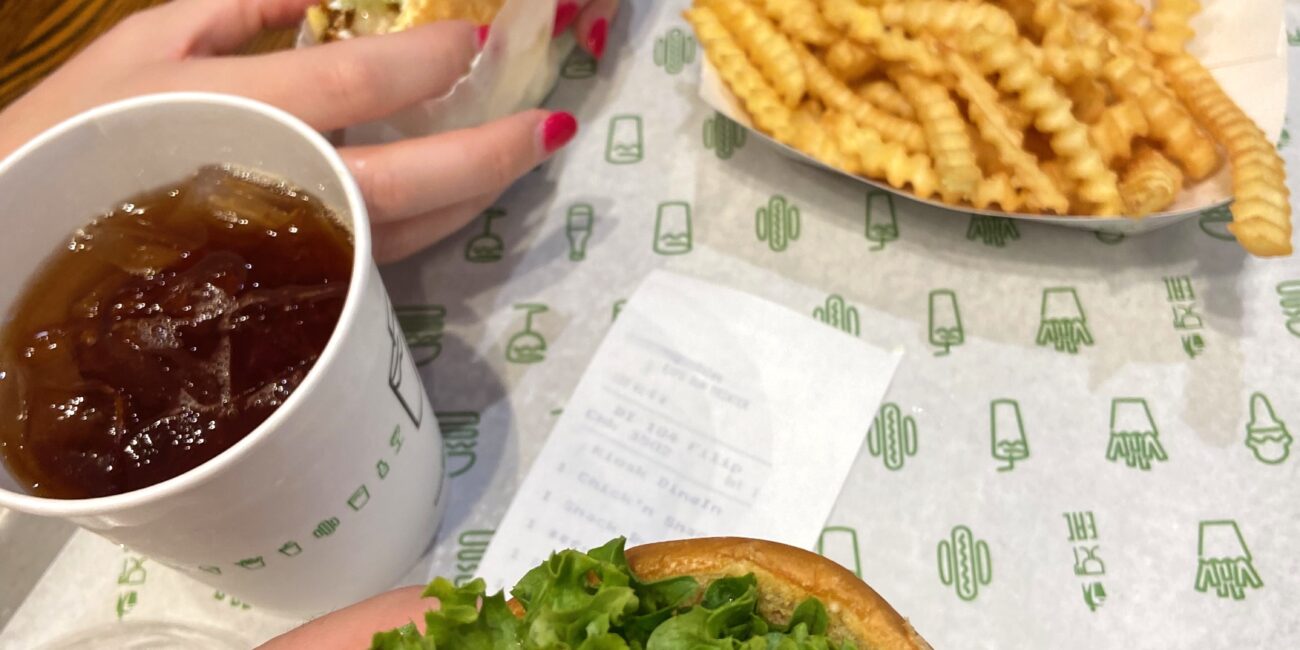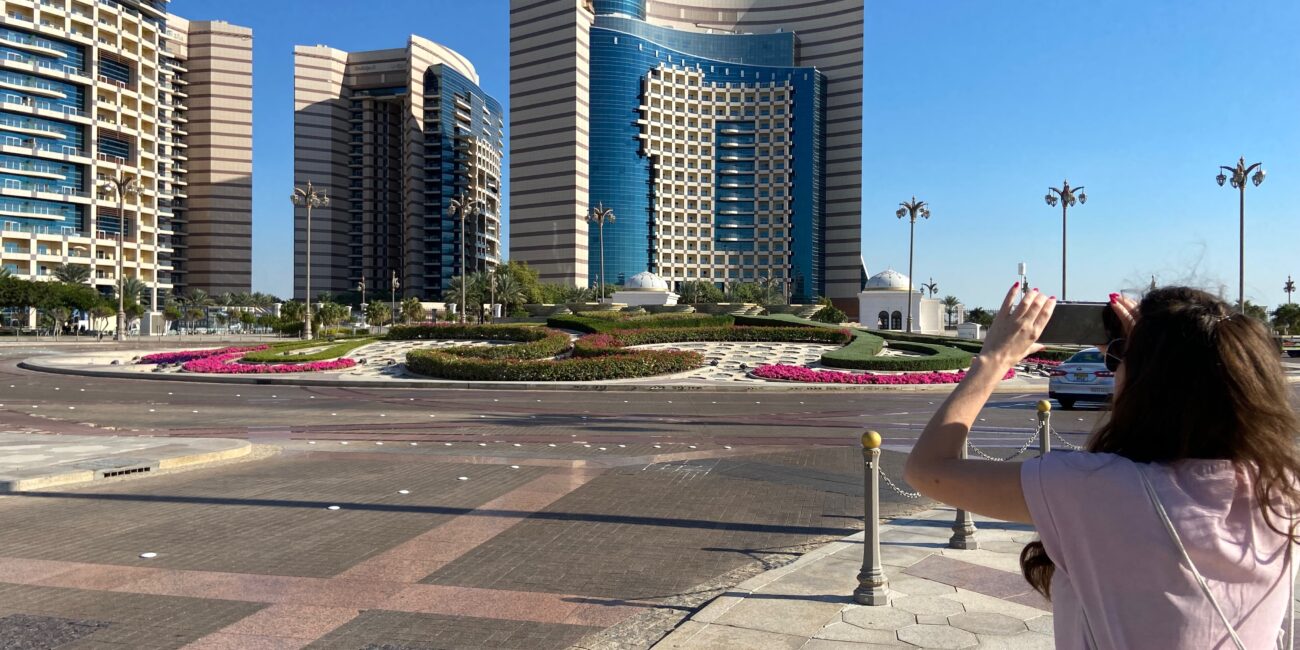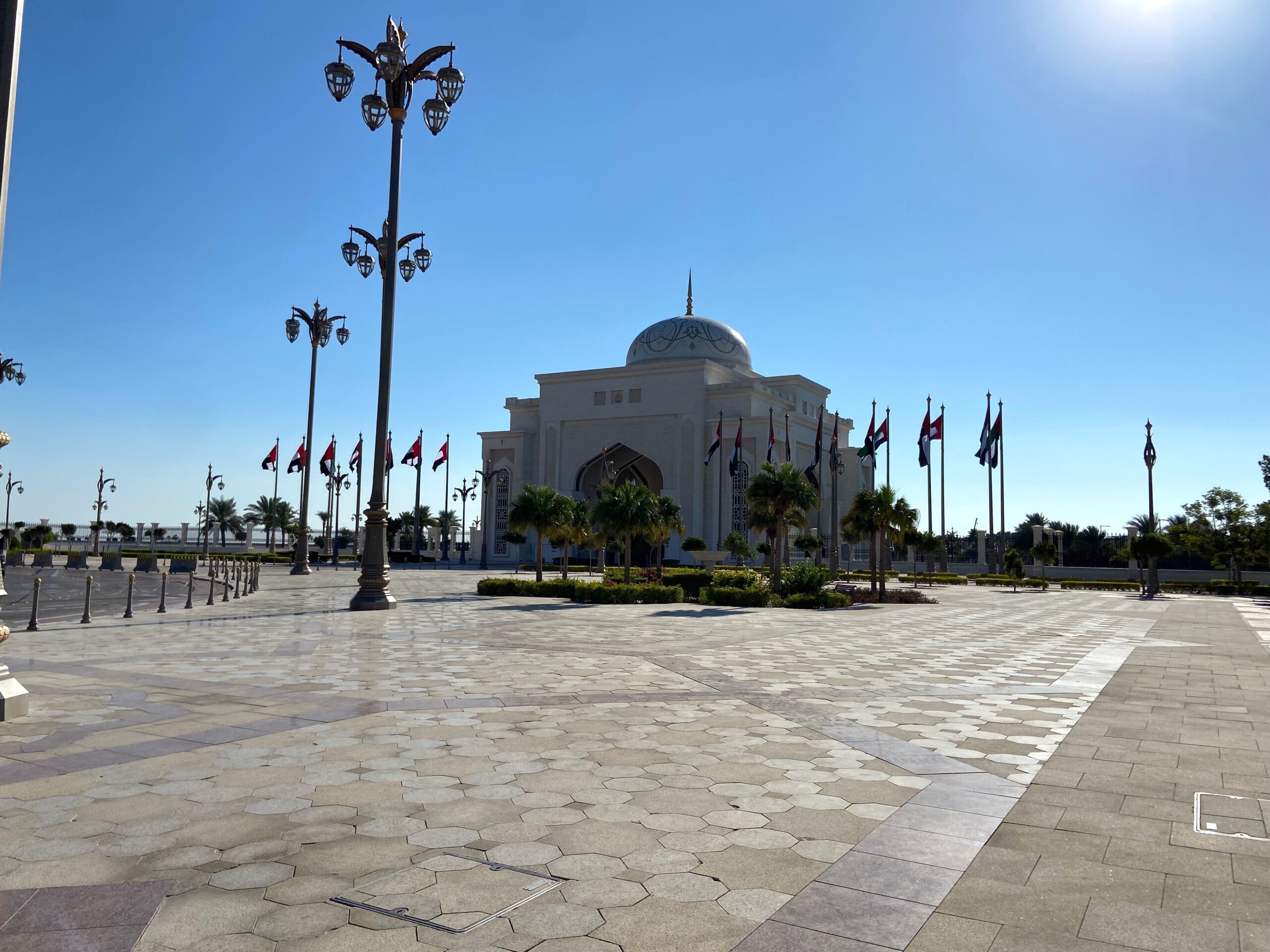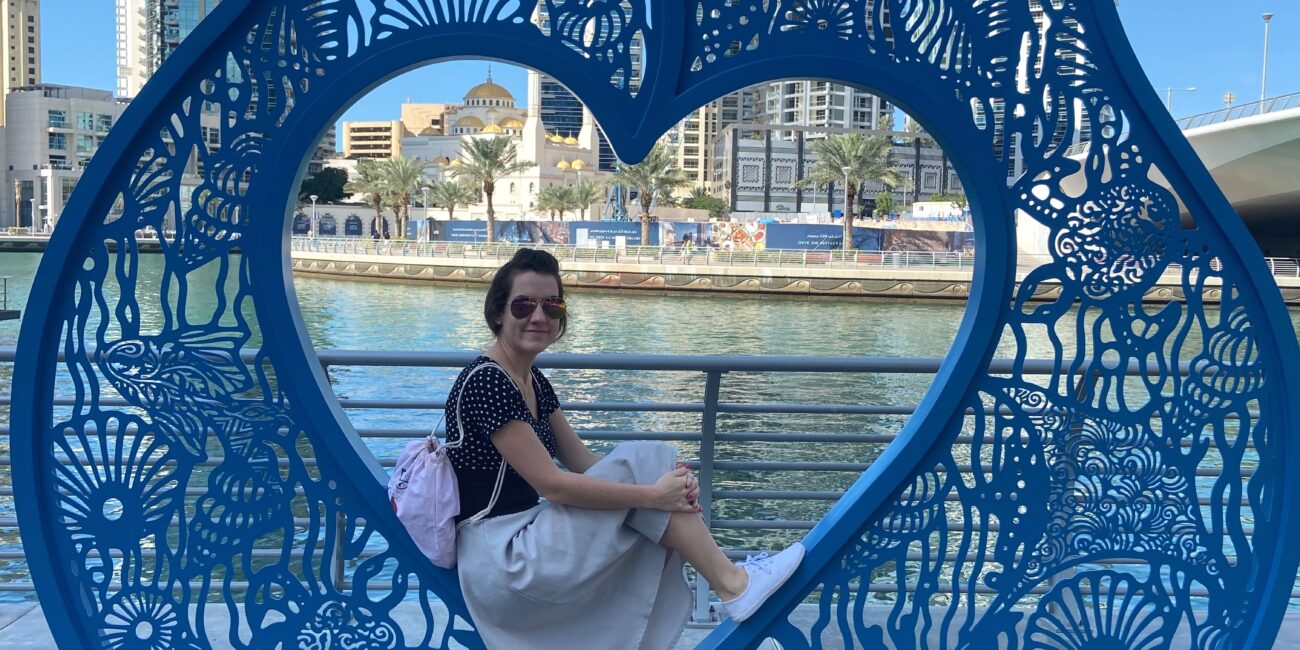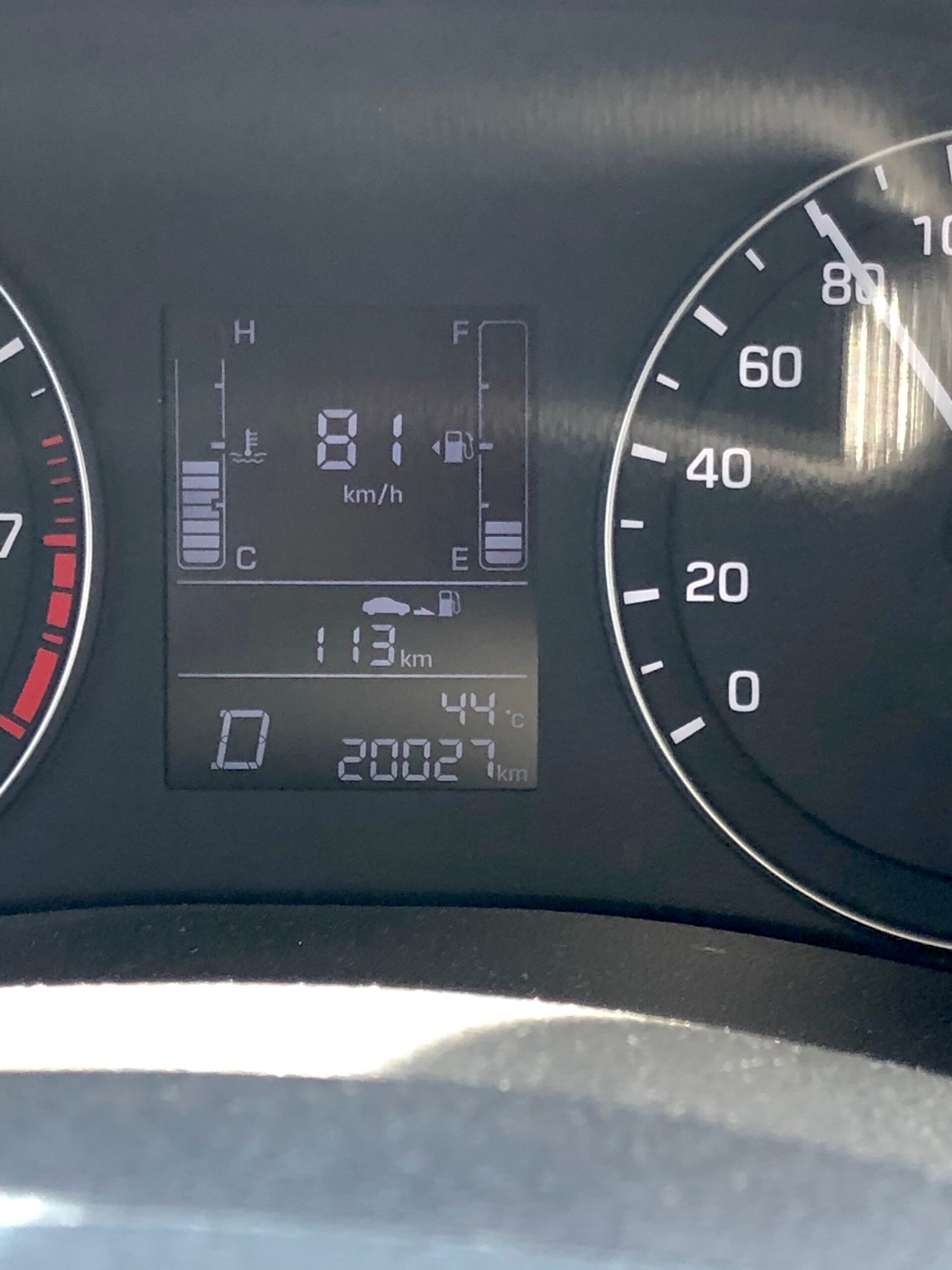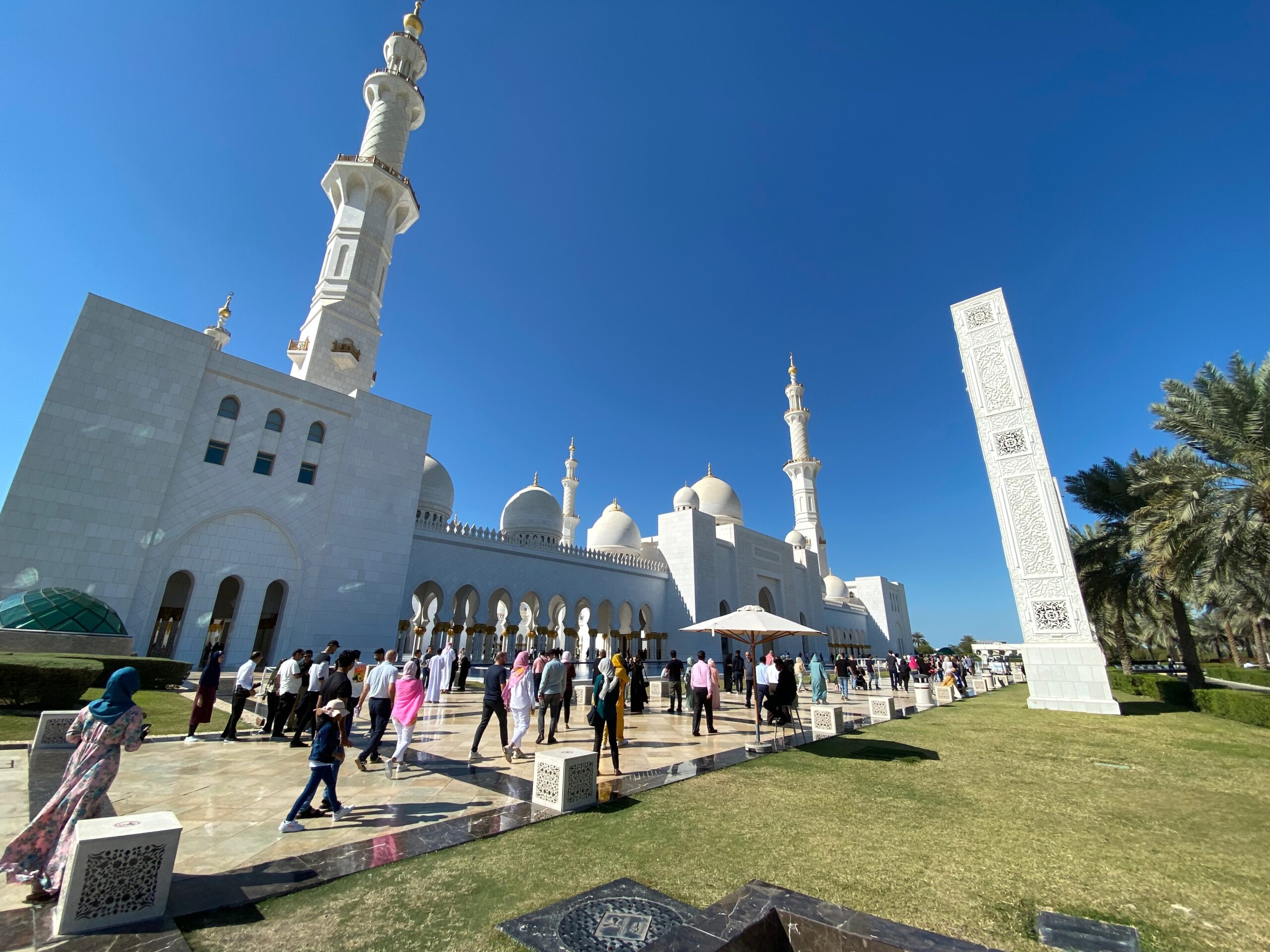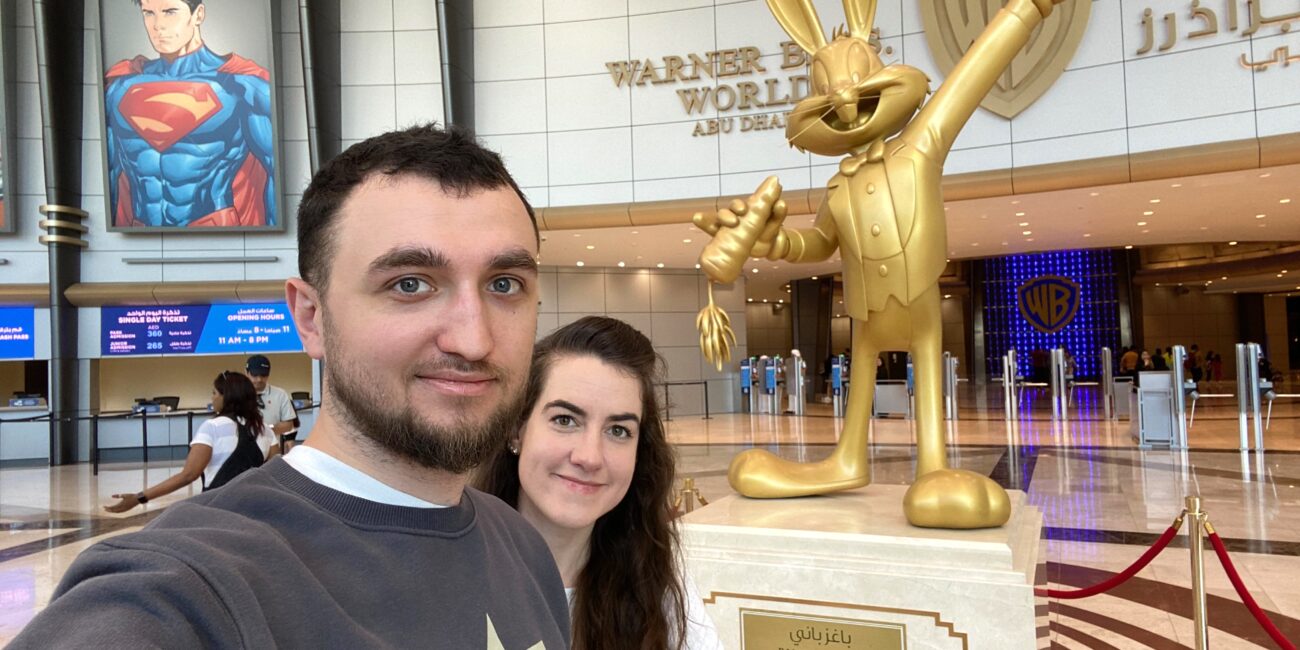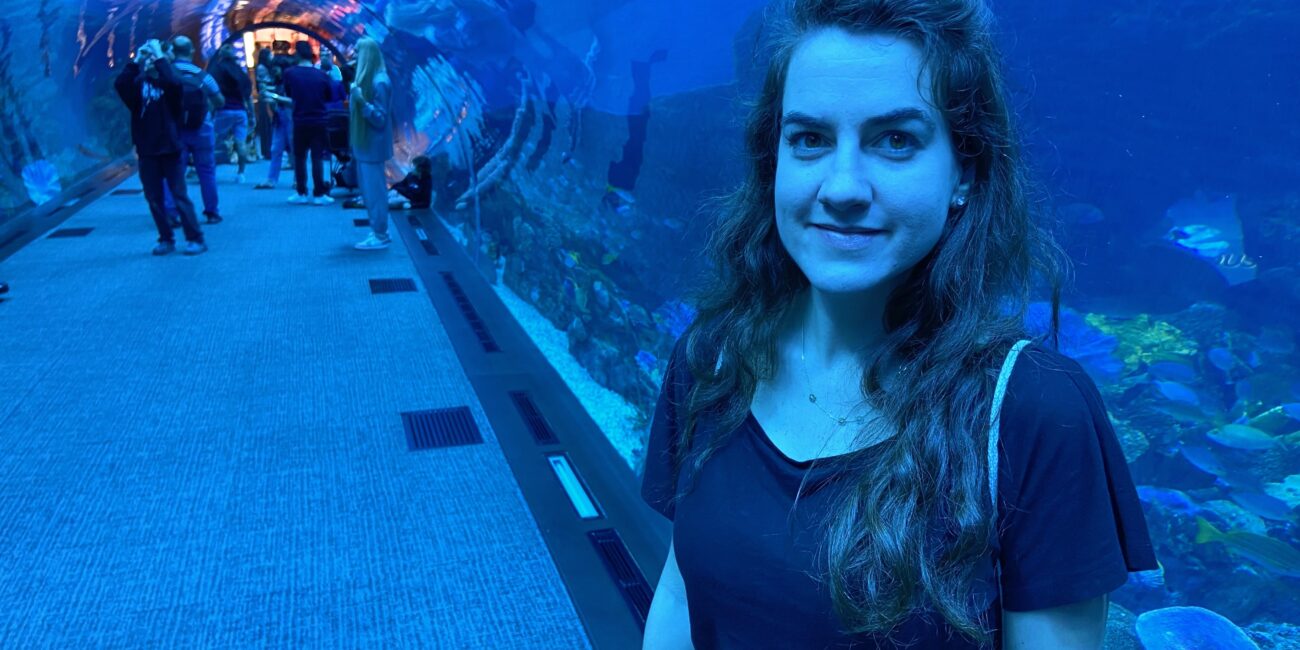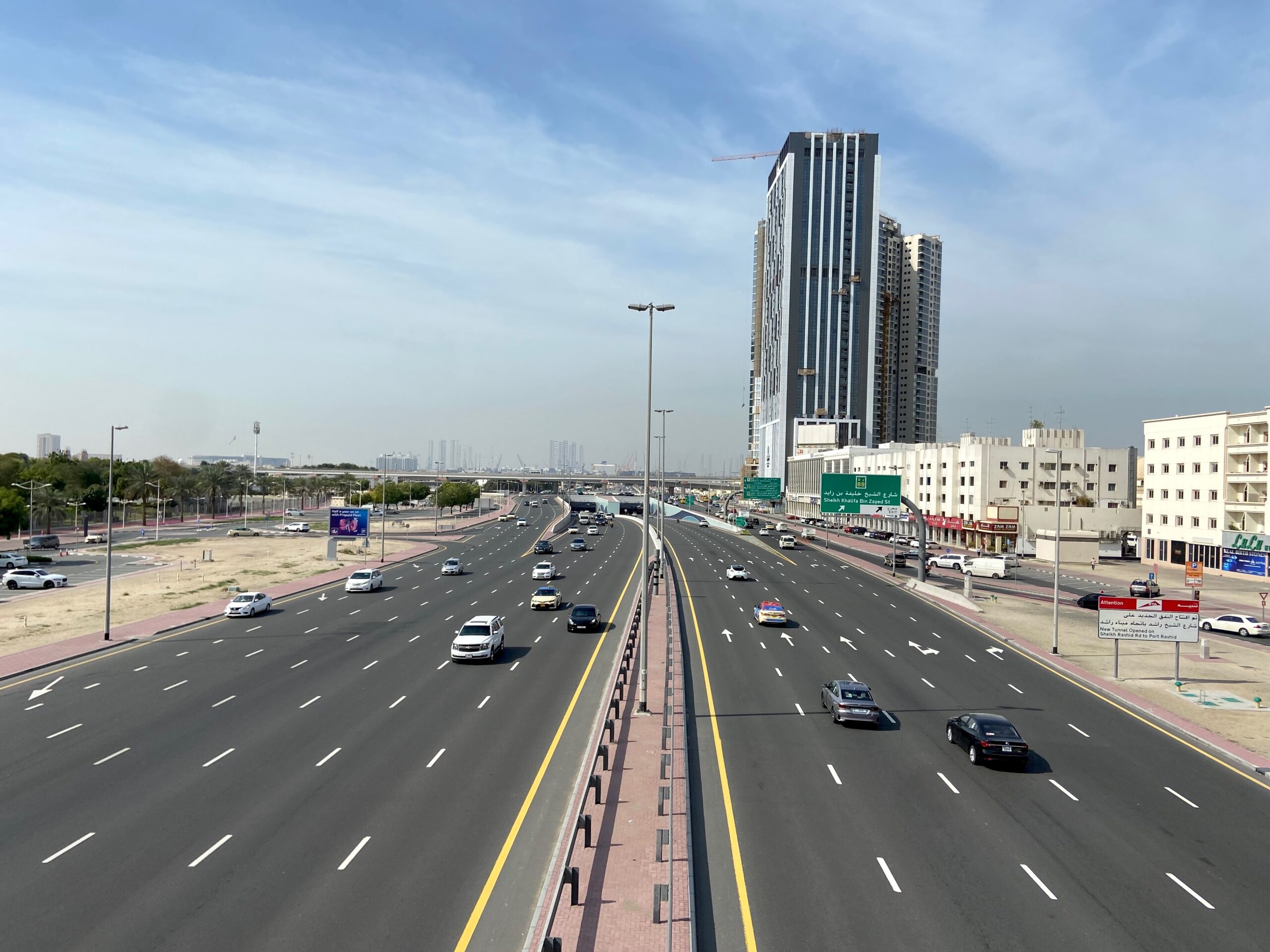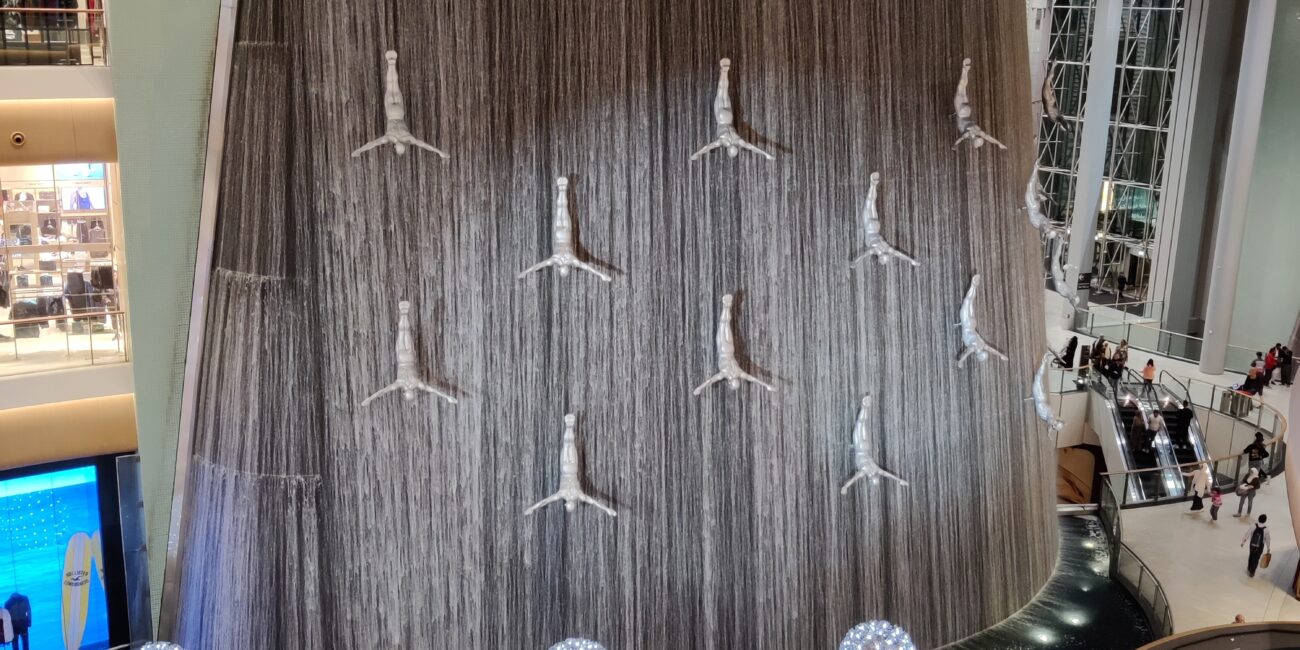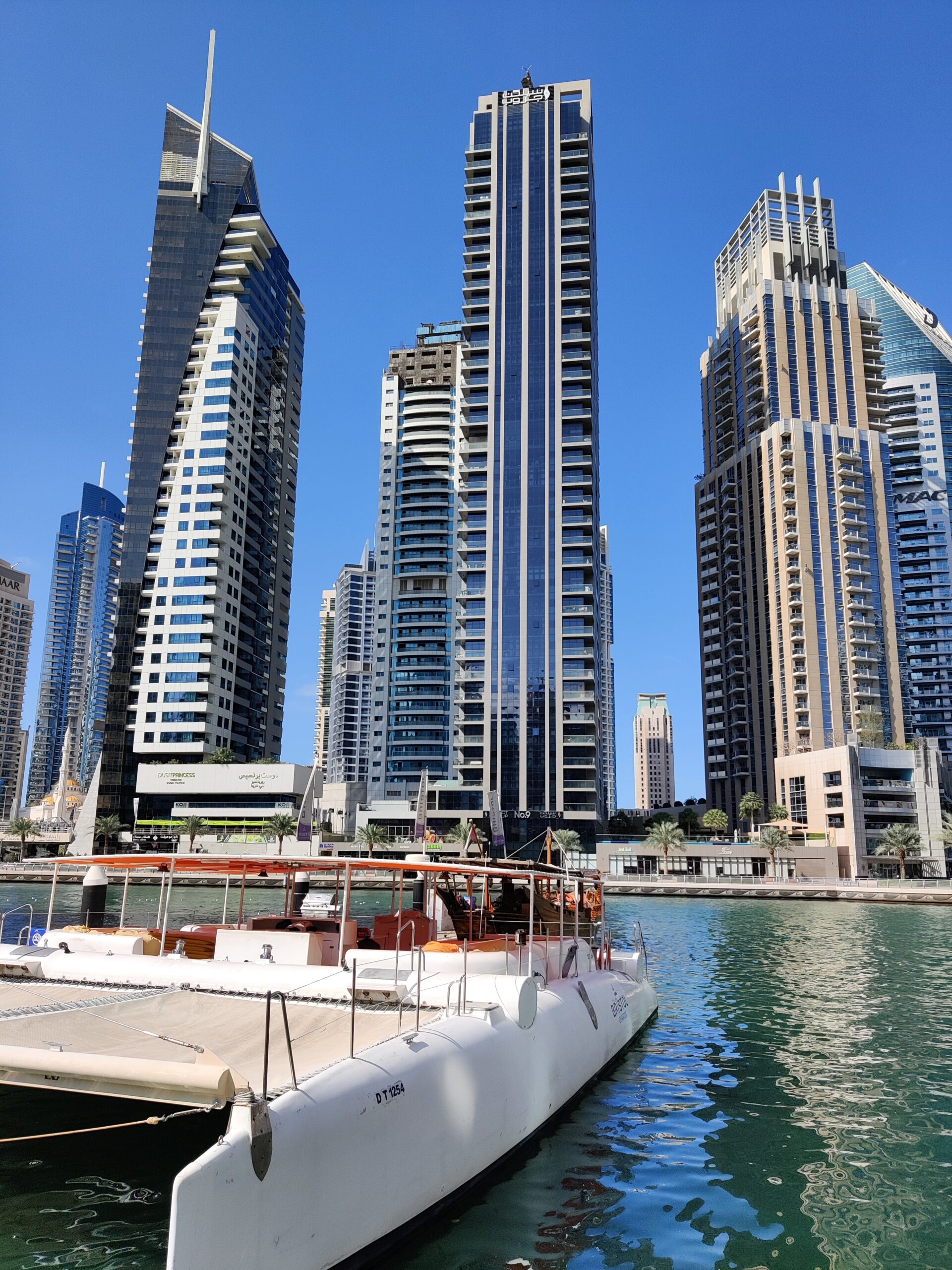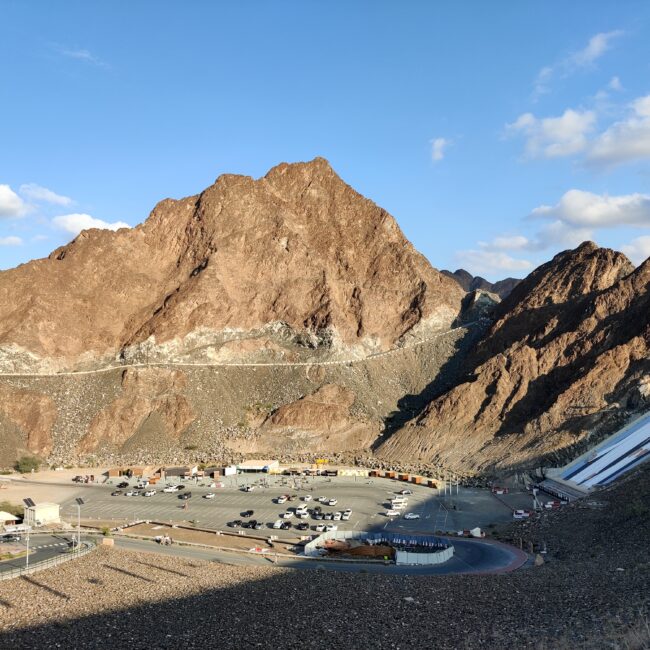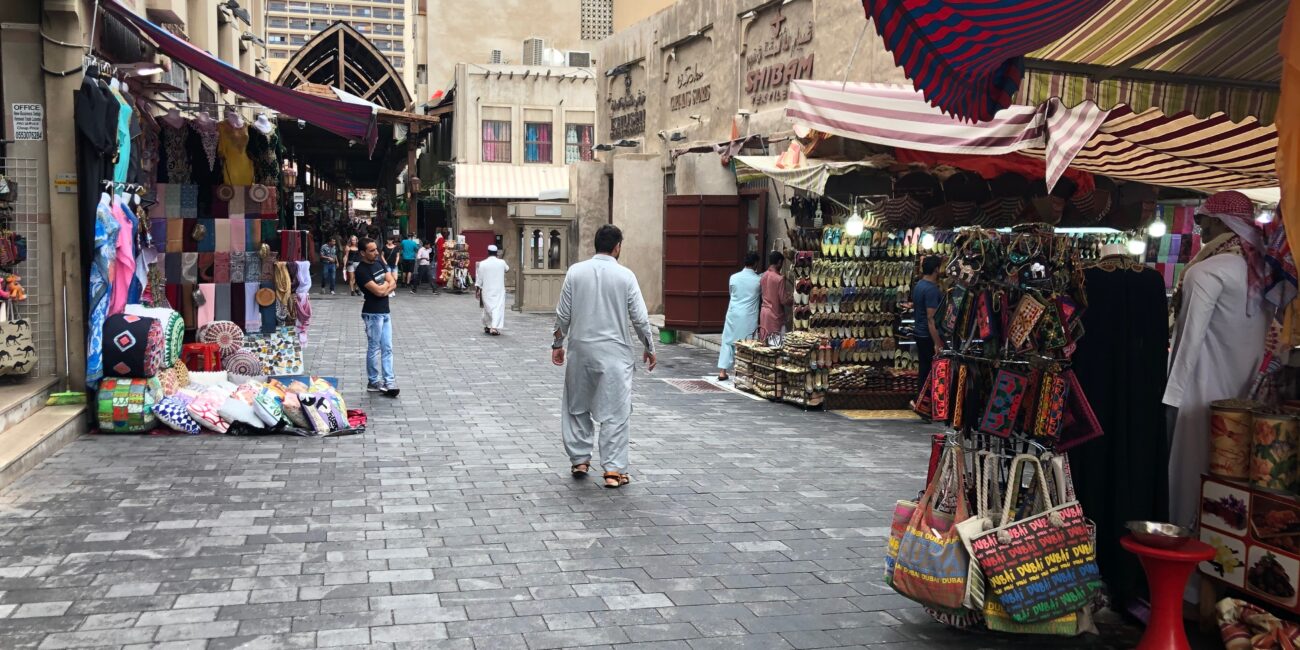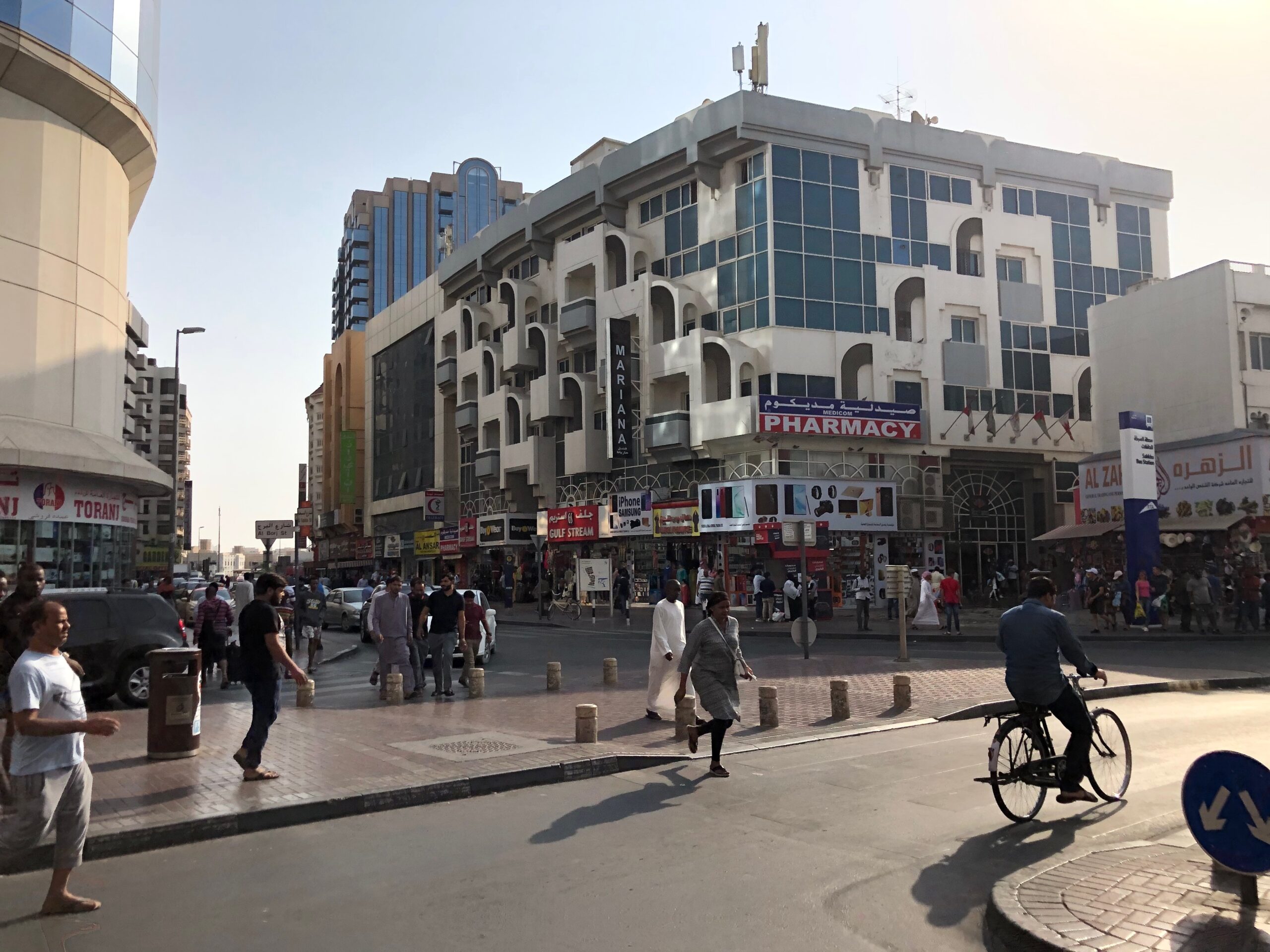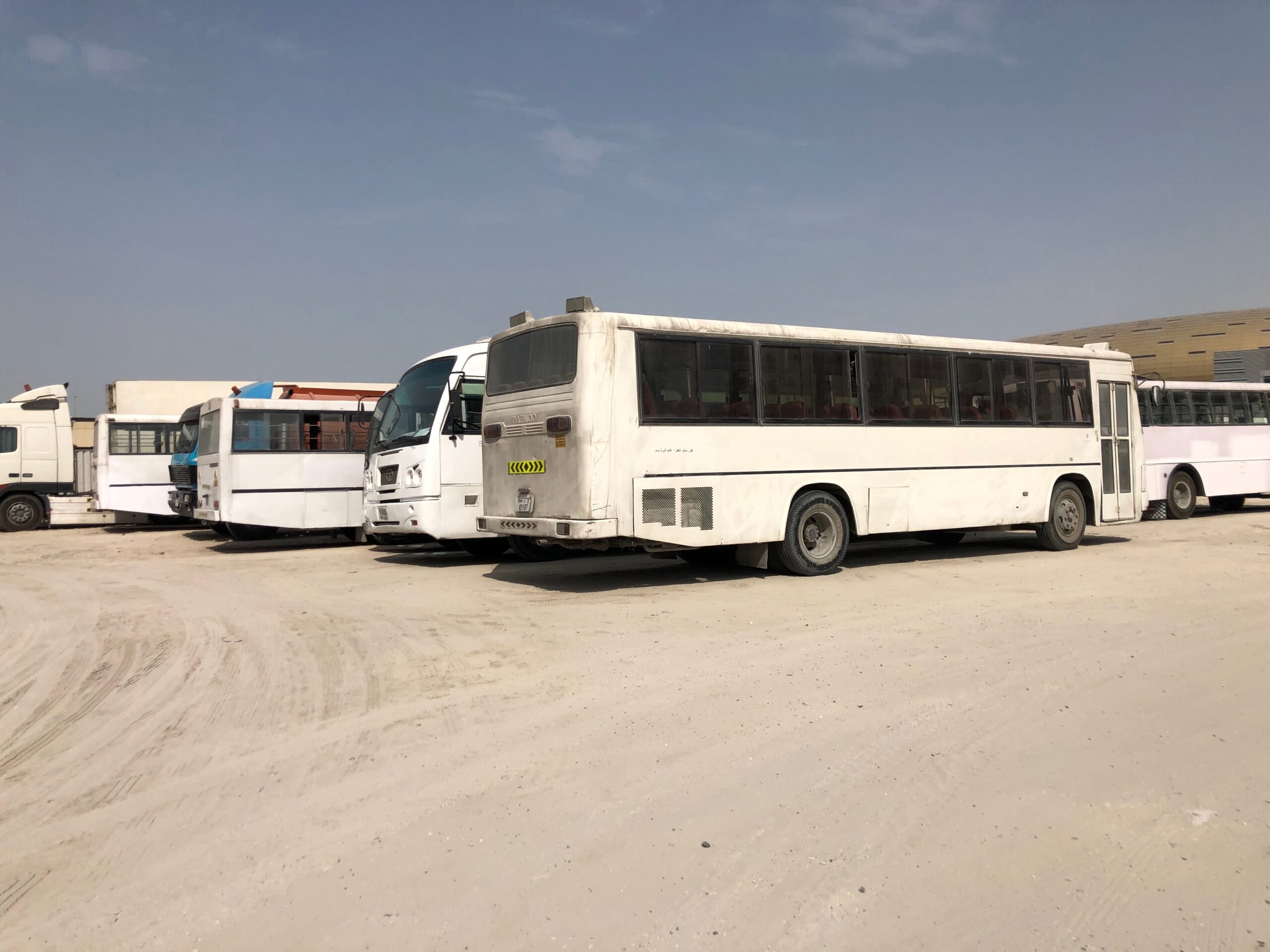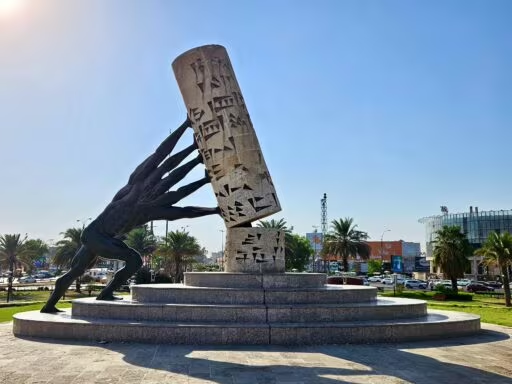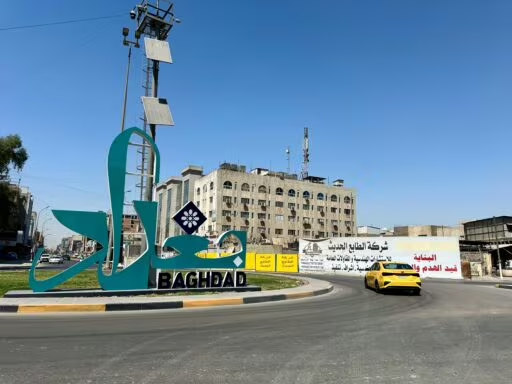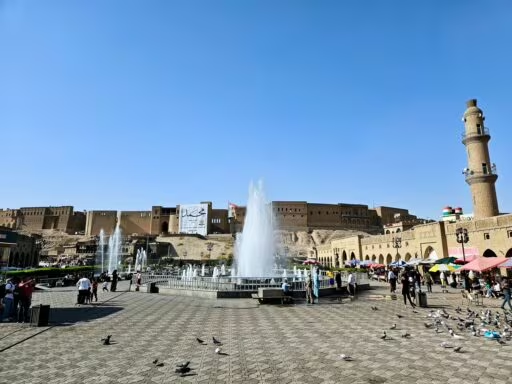This post is also available in:
Polski
Hello! 👋
We’ve reached a point where we can summarize our travel experiences in the United Arab Emirates in one comprehensive article. For Jadzia, this was her first encounter with the country, while for me, it was already the third – offering us the chance to view the Emirates from two distinct perspectives. For her, it was a fresh discovery, while I, with the benefit of hindsight, could observe the changes that had taken place over the years.
In this post, we’ll focus not only on our shared journey in 2023 but also on earlier trips. It’s a sort of summary that showcases how the Emirates looked before the pandemic, during it, and how they now appear in this new reality. We aim to give you an insight into this country from both practical and personal perspectives.
We invite you to read along – no unnecessary embellishments, just honest insights and useful information for anyone planning their trip to the UAE. 😊
Psst… Take a look at our previous posts about the Emirates
To fully grasp our experiences and descriptions in this article, it’s worth taking a look at my earlier memories of traveling to the Emirates. Before Jadwiga joined these adventures, I had the chance to view this country from a different perspective:
- 🇦🇪 First Journey to the Emirates – How I Began Exploring the Middle East? Memories from my first visit in 2019 – full of new impressions and my initial encounters with the culture of this region.
- 🦠 The UAE – Traveling During the Pandemic. A story from September 2020, when traveling was full of uncertainties, and tourism during COVID-19 looked entirely different.
These memories perfectly complement our shared perspective on the UAE and can serve as valuable context for a complete understanding of this fascinating country. 😊
How did we get to the Emirates?
This time, we chose a direct flight to Dubai (DXB), using Miles & More points. However, in hindsight, I have to admit that the regular price for this connection, approximately 2200 PLN, was quite high compared to the level of comfort provided. LOT Polish Airlines operates this route with narrow-body aircraft, which, to put it mildly, is not the most comfortable option for such a long flight.
An alternative option could be flying with Wizz Air from Katowice or Krakow to Abu Dhabi – tickets are cheaper, although the baggage allowance is smaller. I understand airlines need to recover their finances after the pandemic, but as a passenger, I care little about that. After all, I’m paying and expecting at least a decent standard.
Our journey began in Warsaw, but unfortunately, we didn’t land at the main, majestic DXB terminal that leaves a lasting impression. Instead, we ended up at an older terminal that, jokingly speaking, felt like it was designed for “class B” passengers. There was none of the “wow effect” I had hoped to show Jadzia. Well, it is what it is – a bit underwhelming!
Still, the advantage of a non-stop flight can’t be overlooked – it’s always a time-saver and adds convenience, even if the flight’s overall standard leaves a bit to be desired. 😊
Visas and documents
During our trip to the United Arab Emirates in January 2023, traveling was significantly easier than during the pandemic. This time, no COVID-19 tests or additional health documents were required – what a relief!
When it comes to visas, Polish citizens can enjoy visa-free entry to the UAE. This allows for a tourist stay of up to 90 days within a 180-day period without the need to apply for a visa in advance. All you need is a valid passport, which should be valid for at least six months from your planned date of entry.
The lack of additional formalities definitely simplifies travel planning and allows you to focus on exploring the Emirates.
Visa regulations for citizens of other countries may vary. For example, residents of Gulf Cooperation Council (GCC) countries are currently required to obtain an electronic visa before traveling to the UAE. This visa allows a 30-day stay with the option to extend it once for an additional 30 days.
Car rental in UAE
It couldn’t go without some hiccups. We decided to explore Dubai on foot and by metro for the first three days, leaving the car rental for later. Getting to the hotel from the airport by metro turned out to be a convenient choice. Only after a few days did I decide to rent a car – and, of course, managed to mess things up along the way.
At first, I accidentally booked a car… in Doha instead of Dubai. Luckily, I realized it quickly, canceled the reservation, and made a new one. The problem? I ended up booking the car for the next day instead of the day we actually needed it. Well done, me! 😅
When everything seemed ready, I ran into trouble with my credit card – the bank decided to block it, despite my prior notification about the planned trip. Thankfully, after a lengthy conversation with the Alamo staff and a few phone calls, the issue was resolved. As usual, the security deposit was held on the credit card, while we used Curve for the rental payment.
We had a Ford Escort with an automatic transmission at our disposal. Picking up the car was smooth, and driving around Dubai and the rest of the UAE was genuinely enjoyable.
Driver’s license
If you’re planning to rent a car abroad, be sure to check out our article 🚗 How to rent a car and what to look out for. You’ll find practical tips and information to help you avoid surprises.
Don’t forget that renting a car in the Emirates requires an 🪪 International Driving Permit – learn more about how to obtain it in our dedicated article.
Problems when returning a car
Returning the car initially seemed to go smoothly – or so I thought. Later, they noticed a tiny chip on the windshield, likely caused by a stone on the road. At first, the rental company accepted the car with “no issues”, but later, they unlawfully charged my card 550 PLN, informing me about it only after the fact via email.
What’s more, they charged the amount to my Curve card, which I used for the rental payment, instead of the credit card used for the deposit hold. I reported the transaction as unauthorized. Initially, my claim was rejected by the bank, but after submitting detailed evidence and explanations, the funds were ultimately refunded to me.
Traffic conditions
Car travel
Driving in the United Arab Emirates is, in most cases, a pleasant and convenient experience. The roads are wide, well-maintained, and designed to handle heavy traffic. In cities like Dubai, Abu Dhabi, and other major urban areas, the road infrastructure is of a very high standard.
However, it’s not always as smooth as it seems. Beyond the main cities and highways, you may come across smaller roads, often unpaved, gravel tracks, or rough paths. These types of roads are especially common in the more remote regions of the UAE. They require greater caution and sometimes a suitable vehicle, particularly if you plan to explore mountainous or desert areas.
Traffic regulations in the UAE
- Speed limits: On smaller streets, the limit is 40 km/h, on main roads, it ranges from 60-80 km/h, and on highways, it’s 100-120 km/h.
- Alcohol and driving: The United Arab Emirates enforces a zero-tolerance policy for alcohol in a driver’s system. Driving under the influence of alcohol is strictly penalized.
On the roads, it’s common to encounter drivers frequently changing lanes without signaling, especially in heavy traffic. There are also instances of vehicles significantly exceeding the speed limit – particularly luxury cars, which are abundant in the UAE.
Navigation and unforeseen road changes
Using navigation is essential but not always foolproof. Due to the rapid development of infrastructure, navigation systems may sometimes fail to update maps in time. There are instances where newly constructed roads intersect with existing ones, blocking access—I experienced this firsthand. In such situations, it’s crucial to stay flexible and be prepared for detours.
Speed cameras and inspections
Speed cameras in the UAE are ubiquitous, found on highways as well as in urban areas. These are state-of-the-art monitoring systems that not only record speed but also detect seatbelt violations, phone usage while driving, and running red lights. Fines are issued automatically, so it’s best to adhere to the rules—taking unnecessary risks is simply not worth it.
It’s worth noting that in the Emirate of Abu Dhabi, speed cameras may take pictures of vehicles even when the driver hasn’t exceeded the speed limit. These photos are taken for monitoring purposes and do not automatically result in a fine. So, if you notice a camera flash during an evening drive, it doesn’t necessarily mean you’ve violated any traffic regulations.
Public transport
Public transportation
In the United Arab Emirates, the bus system is well-developed, particularly in Dubai and Abu Dhabi, where buses run regularly and are integrated with other public transport modes like the metro and trams. The network connects major districts with less frequented areas, making it useful for reaching locations beyond the metro’s reach.
Dubai
In Dubai, buses are managed by the Roads and Transport Authority (RTA). The fleet is modern, air-conditioned, and on some routes, you can find Solaris buses manufactured in Bolechowo near Poznań, Poland. The buses are equipped with information screens and comfortable seating. To use them, you need a Nol card, which serves as a payment method for all public transport.
👉 For more information, visit Visit Dubai.
Abu Dhabi
Buses in Abu Dhabi provide extensive coverage, connecting both the city and intercity destinations. The system operates similarly to Dubai’s, although the number of routes is smaller.
👉 For more information, visit Visit Abu Dhabi.
Other emirates
In smaller emirates like Ras Al Khaimah or Fujairah, the bus network is less developed, and buses run less frequently. They are often used primarily for inter-emirate routes or within the larger cities of the respective regions.
👉 For more information, visit: Visit Ras al Khaimah or Visit Sharjah.
Tram
In Dubai, there is a single tram line known as the Dubai Tram. This route connects key areas such as Dubai Marina, Jumeirah Beach Residence (JBR), and Al Sufouh, passing through important hubs like Dubai Media City, Palm Jumeirah, and Dubai Knowledge Village.
The tram line consists of 11 stops, spanning a total length of approximately 10.6 km. The stations are modern and fully air-conditioned.
👉 You can read more on the RTA Dubai website.
Subway
The Dubai Metro is truly a gem when it comes to public transportation. Although the system is relatively young, having opened in 2009, it immediately impresses with its modernity and organization. For someone accustomed to European metro systems like those in Paris or Berlin, the Dubai Metro feels more sterile, spacious, and… just different.
To start with, the Dubai Metro is fully automated. No drivers. The trains glide along the tracks on their own, and the view from the front of the train (especially in Gold Class, but more on that later) is something you won’t easily find in other metro systems around the world. Everything runs like clockwork – regular schedules, cleanliness on the stations and inside the trains, and air-conditioned platforms, which is an absolute necessity in Dubai’s climate.
The system includes two main lines:
- 🔴 The Red Line across through the entire city, from the airport (Centrepoint station) to Expo City, passing major landmarks such as Burj Khalifa and Dubai Marina.
- 🟢 The Green Line is shorter and serves the older districts, such as Deira and Al Karama.
Both lines intersect at two major transfer stations – Union and BurJuman – making it easy to switch routes.
Cabins – luxury or space for everyone?
People love class divisions – and the metro is no exception. There are three types of cabins:
- Gold Class – luxurious cabins with comfortable seats and panoramic views from the front of the train. It feels a bit like business class on a plane.
- Cabins for women and children
- General Cabins – where most passengers travel. Compared to European standards, these cabins are still spacious and impeccably clean.
👉 You can read more at RTA Dubai and Visit Dubai.
Ticket fare
You pay for your rides using a Nol card, which you top up with a specific amount. The ticketing system is zone-based, so the cost depends on the distance traveled. Routes are clearly marked, and announcements are made in both English and Arabic.
Impressions?
For me, the Dubai Metro is proof of how a transport system can be both functional and traveler-friendly. The punctuality is particularly impressive – trains arrive exactly as scheduled. Moreover, the view of Dubai from the Red Line carriages, which run mostly above ground, is something every visitor should experience.
Accommodation
Dubai
During our stay in Dubai, we chose accommodation in the Al Jaddaf district, which had already left a good impression on me during a previous visit. This time, we stayed at FORM Hotel Dubai – a modern, recently opened property that proved to be an excellent base for exploring the city.
The hotel rooms were very well designed – minimalist yet stylish, with great attention to detail. Daily cleaning and comfortable beds made returning to the room after a full day of exploring a true pleasure.
The hotel is located in a quiet area with convenient access to the city’s main attractions, thanks to its proximity to the metro. Nearby, you’ll find a pharmacy, a small grocery store, and several local restaurants. Apps like Talabat or Careem easily deliver food right to your door, which was an added bonus.
Abu Dhabi
During our stay in Abu Dhabi, we chose the Novotel Abu Dhabi Al Bustan hotel. While the room was spacious and comfortable, we encountered a few issues: mold on the wall, a dirty carpet, and disturbances from the staff during the night. Additionally, a second towel was missing, which required follow-up. After reporting these inconveniences, Agoda provided us with compensation in the form of a discount for future bookings. Despite these incidents, the hotel offers amenities such as free parking and in-room dining options. Notably, a nearby police station adds an extra sense of security.
SIM card
We decided to purchase a SIM card directly at the airport. The terminal offers booths of major telecommunication operators such as Etisalat, du, and Virgin Mobile, providing various tourist packages. The process is simple: just show your passport, choose the appropriate plan, and make the payment. However, it’s worth noting that according to UAE telecommunication regulations, only one SIM card or eSIM can be issued per passport.
WiFi Calling – avoiding high costs
The United Arab Emirates is a country where international calls using a Polish number can be extremely expensive. Roaming charges for calls can amount to several PLN per minute, which can quickly lead to high costs during longer conversations.
For this reason, it’s worth using WiFi Calling if your provider supports this feature. Calls made via WiFi are significantly cheaper or even free, depending on your tariff plan. Most hotels, cafes, and shopping malls offer free WiFi, allowing you to communicate with family and friends without incurring additional costs.
However, there is one thing…
Authorities in the UAE have long blocked services such as FaceTime, WhatsApp, and Skype, preventing users from making voice and video calls through these apps. These restrictions are tied to telecommunication regulations and national security concerns.
As a result, using these features may be challenging or even impossible, especially when relying on apps that are restricted. While some services might still work, many remain inaccessible without additional tools like a VPN. However, it’s important to note that using a VPN in the UAE is legally regulated, and unauthorized use could result in legal consequences.
Food
Emirati cuisine is a fascinating blend of Middle Eastern, Asian, and African flavors. One of the most popular dishes is machboos, an aromatic rice dish cooked with spices and served with chicken, lamb, or fish. Shawarma, made of chicken or beef wrapped in pita bread with various toppings, is a common street food. Fans of vegetarian dishes will enjoy falafel and hummus, which are often served together.
Dubai and Abu Dhabi are places where cuisine from around the world is within easy reach. You can enjoy everything from Italian pasta to sushi or American-style burgers. Fast food enthusiasts will find familiar chains like McDonald’s, KFC, and Subway, offering menus slightly different from those in Europe, tailored to local tastes.
During our trip, we mainly focused on exploring local flavors. Jadzia particularly enjoyed chicken dishes – her go-to culinary choice. I, on the other hand, ventured into more diverse options, including shawarma and kofta, both of which are readily available on nearly every corner.
Of course, we couldn’t skip the classic Starbucks coffee. In the UAE, this chain is incredibly popular, with cafes located both in shopping malls and along main streets. Prices are comparable to those in Poland.
Al Baik – popular fast food in the Middle East
Al Baik is one of the most recognizable fast-food chains in the Middle East region, which has also been operating in the United Arab Emirates for several years. Originating from Saudi Arabia, it enjoys immense popularity, evident in the long queues often stretching throughout the entire restaurant.
The food is decent—nothing that will blow your mind, but worth a try if you’re in the mood for something simple and with a regional vibe. 🍗
Exchange office or ATM?
In the United Arab Emirates, withdrawing cash from an ATM is definitely a more convenient option than searching for dirhams in a Polish exchange office. Every time I’ve been here—whether alone or with Jadzia—we used local ATMs. They are widely available, both in major cities and less frequented locations.
Most ATMs in the UAE do not charge additional fees for cash withdrawals, but it’s always worth checking during the transaction. Usually, the screen will display a notification if any fee is to be applied. Based on my experience, using a currency card can save you a lot—avoiding unfavorable exchange rates at currency exchanges or when paying in your home currency.
When it comes to card payments, we had no issues—whether at gas stations, restaurants, or shops. However, it’s a good idea to have some cash on hand, especially in smaller towns or local markets.
Climate and weather conditions
The heat in the United Arab Emirates is something to consider, especially if you’re visiting during the summer. Temperatures often exceed 40°C, and with high humidity, it can be exhausting. Dubai and Abu Dhabi, as the most developed emirates, have infrastructure adapted to these conditions – air-conditioned corridors between metro stations, bus stops, and shopping malls, which become a refuge on hot days.
The best time to visit is during the winter months, from November to March, when the temperatures are more bearable – usually ranging between 25–30°C during the day. Evenings can be cooler, so it’s perfect for leisurely walks, sightseeing, or just enjoying the atmosphere without the need to hide from the sun.
However, the Emirates are not just about Dubai and Abu Dhabi. In the less developed emirates, the infrastructure is not as advanced. Many places have typical bus stops or pedestrian walkways familiar to us, and people simply adapt their lifestyle to the weather conditions. During the day, when temperatures reach 40-50°C, activity almost comes to a halt. Locals hide indoors, and life starts again in the evening when the air becomes slightly more bearable.
Safety
The United Arab Emirates is a place where you can feel safe in almost any situation – especially as a tourist. The first thing that stands out is the general order and the absence of typical “threats” that we are used to encountering in Europe. No one is watching to see if you’re guarding your backpack, and your wallet or phone left on the table at a restaurant is unlikely to disappear, even if you step away for a moment.
Dubai and Abu Dhabi are cities that truly invest in security. This is evident in every detail – from surveillance cameras in key locations to innovative technologies, such as autonomous patrols. On social media, especially on TikTok, you can find plenty of videos showcasing daily life in the Emirates – police officers in luxury cars or organized operations aimed at maintaining order. And no, it’s not just for show – this system works.
When it comes to the locals, the situation is a bit more complex. Strict regulations and penalties are no myth. Any violation of the rules – from loud arguments in public places, offensive gestures, to inappropriate behavior on social media – can result in hefty fines or even deportation. What might seem harsh to us is actually aimed at maintaining order in the Emirates. For tourists, this is a huge advantage, but for residents, especially those from more liberal cultures, living here requires adjustment and a great deal of caution.
Places we visited in the UAE
Instead of telling you everything here, it’s better if you check out our separate posts, where we’ve detailed what we managed to see. You’ll find specifics, practical tips, and our impressions of these places there.
🌇 Dubai and its surroundings – What to see in a city full of contrasts? From futuristic buildings to traditional markets.
🏙️ Abu Dhabi and its surroundings – Take a look at the capital of the Emirates! We share insights on the most interesting places, including the unforgettable ride in an autonomous taxi.
Click and dive into our adventures! 😊
Social inequality in the Emirates
The United Arab Emirates is a country full of contrasts, where modernity and luxury coexist with deep social inequalities. Beneath the shiny facade of skyscrapers and luxury malls lies the reality in which many migrant workers endure conditions that resemble modern-day slavery.
The majority of the population in the UAE consists of migrant workers, primarily from South Asia and Africa. They are the ones building the impressive skyscrapers of Dubai and Abu Dhabi, working in hotels, restaurants, and serving the homes of wealthy residents. Unfortunately, their contribution to the country’s development often comes at the cost of basic human rights.
Many workers are employed under the kafala system, which ties their legal status to their employer. This means they cannot change jobs or leave the country without their employer’s consent. This system leads to numerous abuses, such as passport confiscation, unpaid wages, and being forced to work in dangerous conditions.
Living conditions
Migrant workers often live in overcrowded and neglected labor camps, with limited access to medical care and other essential services. They work in extreme climatic conditions, exposed to high temperatures, which leads to numerous health issues and even fatalities.
Under international pressure, the UAE has introduced some reforms, such as removing the requirement for employer consent to change jobs. However, in practice, many of these changes remain on paper, and migrant workers continue to face systemic abuses.
Summary
The United Arab Emirates is a country of contrasts – on one hand, there is impressive development, cutting-edge technology, and spectacular tourist attractions, while on the other, deeply entrenched social inequalities that are hard to ignore. Although the UAE presents itself as a nation of success and modernity, the reality for many migrant workers is far from this image. Social inequalities are deeply rooted, and labor rights are often disregarded. In the 21st century, such practices are unacceptable and require urgent action from both the UAE authorities and the international community.
The United Arab Emirates is undoubtedly a fascinating place. Whether you’re looking for modern architecture, unique flavors of local cuisine, or historical corners, there’s something for everyone here. The UAE has become a model of development for other countries in the region that also seek to attract tourists and investors.
However, this rapid progress should be accompanied by cultural and mental changes. It is impossible to build a future based on outdated social patterns. Women should not be viewed solely as domestic helpers, and migrant workers should not be treated as cheap labor without basic rights. Economic and technological development must go hand in hand with equality and respect for all people, regardless of their origin or gender.
The UAE is a place worth visiting, but also reflecting on what lies behind the facade of success. While there is much to see, eat, and admire, behind it all are the people who also deserve better living and working conditions.

